Full Italian Via Francigena: Bourg St Pierre-Rome
- Walking the Italian Via Francigena, one of Europe's great pilgrimages from the Alps to Rome
- Follow trails through classic Italian landscapes and visit exquisite towns
- Taste regional specialties: wine, pasta, cured meats, cheeses, and gelato
- Becoming immersed in the culture and history of each region
- Experience aspects of Italy that are missed by other travellers
Gallery
Itinerary
Day 1 Arrive in Bourg-Saint-PierreBegin your walking tour in the Valais region of Switzerland. Bourg-Saint-Pierre is the gateway to Italy from Switzerland and is full of charm and history.
Explore the newly restored mill and ancient buildings, such as the Church of Saint Pierre with its Romanesque tower and the medieval hospice which sheltered pilgrims walking along the Via Francigena in the Middle Ages.

This family-run hotel is in a great location for the Great Saint Bernard pass. The hotel has a spa with a jacuzzi, steam room, sauna and relaxation room, all of which are free to use for hotel guests. There is also a gift shop, restaurant, café and sun terrace to take in the mountain views from.

This charming, family-run hotel and restaurant enjoys a breathtaking setting along the Route du Grand-Saint-Bernard. Whether you're sipping a cold beer or a warm hot chocolate in the café, it’s the perfect spot to relax and take in the serene mountain ambiance.
This morning begins with a sustaining breakfast in your hotel before setting off on today’s Swiss alpine walk. You will be walking up to the Great St Bernard Pass, situated at 2,470m. This is one of, if not the most, iconic walks on the whole of the Via Francigena route and the path has served travellers and pilgrims for over 2,000 years. The mountain scenery here is stunning and at times you will be completely immersed in nature with only the sound of the wind and perhaps a cowbell or two. You will walk along Lac des Toules reservoir with its mighty dam and floating solar panels. You may even spot marmots along the way.
Upon reaching the pass you will see a historical hostel, L’Hospitalet, which was founded by Augustinian Friars more than 1,000 years ago. It was at one time a hospice and famous for its St Bernard dogs that would rescue travellers in distress. Specifically bred to traverse deep snow and sniff out those who were lost, St Bernard dogs are still used in the same capacity today. Chance to visit the Hospice Museum and the adjacent kennel whilst here.
Ascent/Descent: 961m/124m

Built in 1933, this small historic hotel offers warm hospitality and fantastic cuisine. It has just 14 bedrooms, all of which are comfortable equipped in a classic alpine style. There are no TV’s or Wi-Fi available in the bedrooms. Enjoy a Spa with a whirlpool tub and sauna. You'll find loungers where you can relax with a glass of wine and take in the mountain vistas and a pool table and board games in the living room.

In June 2016, the Auberge de l'Hospice completed a transformation. From the restaurant to the store through the 30 rooms, the entire interior of our century-old building has been refurbished. Wood, stone and soft colors offer you a comfortable setting at an altitude of 2473 m. This decor, designed by the Valais-based company Nuance Couleurs et Habitat, won the “Painters of the Year” award in 2014 in Munich.
Sip your morning coffee or tea whilst taking in views of the crown of high mountains surrounding the pass and the lovely crystal-clear tarn. In comparison to yesterday’s uphill climb today the walk crosses the border from Switzerland into Italy and descends out of the mountains and into the valley.
Walking along the trail in the direction of St Rhémy en Bosses, a place well known for the production of ham, which is cured with mountain herbs. This is a good place to take a break before continuing the descent into Etroubles, a medieval village where Roman soldiers had their winter headquarters. The main street of Via Deffeyes is an open-air art gallery displaying sculptures from artists around the world. It is situated in the Great San Bernardo Valley. This evening you can sit and taste the regional cuisine, whilst surrounded by the mountains.
Ascent/Descent: 14m/1220m

Peaceful hotel with colourful flower garden. The spacious bedrooms overlook the Gran San Bernardo valley and the Alps, and some rooms have balconies. Bathrooms have either a shower or bathtub. The hotel also has a bar, restaurant, outdoor solarium, and fully equipped gym.
Today’s walk follows the ‘rus’, ancient irrigation channels built between the 13th and 15th centuries. Engineering masterpieces, they provided irrigation on the dry, south-facing slopes and utilised water from melting glaciers. Some of these ‘rus’ are still in use today, but many were abandoned. Follow these channels until they give way to a steep downhill trail into Aosta.
The town of Aosta is the principal town of the Aosta Valley and where the inhabitants speak both French and Italian. The ancient town walls of Augusta Prætoria Salassorum are still almost intact in their entirety. The Roman Forum also remains, and this building is annexed to the cathedral that was built in the 4th century but replaced in the 11th century with a new edifice.
Ascent/Descent: 42m/732m

Founded in 1982 in the centre of historic Aosta next to the Roman bridge. It’s on the site of what was once an ancient roman building along the Via Francigena and now is a comfortable hotel which offers a restaurant with a terrace.

This locally owned hotel in the heart of Aosta brings modern lodging to the mountains. Alpine style isn't just an aesthetic after all, it's a way of life. The hotel has a spa (additional entrance fee applies), which offers a whirlpool tub, Finnish sauna, Turkish stem bath, relaxation room and ice waterfall and emotional shower. Massages are also available; advance booking is recommended.
For the next few days, as well as following the Via Francigena, you will also follow the ‘Chemins de Vignobles’ a wine trail that takes you through local vineyards. In the past this area was heavily fortified by castles and today you will encounter three, Quart at the highest point, Nus, located on a cliff, and Fenis, that you can see from a distance.
This evening with dinner why not sample one of the locally produced wines such as Chambave Muscat.
***Depending on the time of year you travel, accommodations in Chambave sometimes adopt a 3 night minimum booking policy. If this is the case on your requested date, you will be booked into your accommodation in Aosta for an additional night***
Ascent/Descent: 507m/565m

This charming, family-run bed and breakfast offers breathtaking views from its terrace—an ideal spot to unwind after a day of hiking. The guest rooms are tastefully appointed in a modern rustic style, combining comfort with character. While the B&B does not have an on-site restaurant for lunch or dinner service, a range of excellent dining options can be found in the town centre, located just 1.3 km away—a pleasant 15- to 20-minute walk.

B&B La Magia Dei Colori is a family-run retreat in the Aosta Valley, offering cozy rustic-chic rooms with breathtaking mountain views. Guests love the warm hospitality, homemade treats, and peaceful atmosphere. Although the B&B doesn’t offer lunch or dinner on-site, a delightful selection of local restaurants awaits in the nearby town centre—just under a kilometre away and easily reached with a leisurely 10-minute stroll.
The route continues to be surrounded by a backdrop of high mountains and you will pass by vineyards and orchards. Near the beginning of today’s walk on the hillside above, Cly Castle can be seen from a distance. This is the first of many castles that can be seen along the route today. The River Evançon flows through the bottom of the valley whilst the imposing and majestic Verrès Castle stands at the entrance to a side valley called Val d’Ayas. This fortress has walls that are 2 metres thick and can only be reached on foot.
Tonight, will be spent in the small town of Verrès overlooked by the hills and located close to the Parco Regionale del Mont Avic.
Ascent/Descent: 725m/868m

Located on the edge of Mount Avic Natural Park in the town of Verrès, Relais St Gilles offers comfortable air-conditioned rooms. A buffet breakfast is available each morning in the sunny dining room. The 16th-century Castle Verrès is just a 15-minute walk away.
There are many interesting sights to discover today, starting with the Echallod Bridge, built by the Romans and which spans the Dora Baltea River enabling you and other pilgrims and travellers to continue on the road to Rome. Next, see Bard Fortress which houses the Museum of the Alps, and was originally built in the 10th century. The town of Bard has been voted ‘one of the most beautiful in Italy’ due to its houses with frescoed facades. This afternoon you will begin to follow an original consular Roman road called the Via Delle Gallie. Passing through Donnas this town is famous for its vineyards and it’s possible to visit a winery whilst here.
Enter Pont Saint Martin, your destination for this section of Via Francigena and a pretty village located on the border between Valle d’Aosta and Piedmont. Famed for its Roman bridge of the same name. Take a wander through the streets and appreciate this strategic gateway to the Alps.
Ascent/Descent: 140m/200m
This comfortable accommodation is located on the edge of Pont-Saint-Martin, offering free Wi-Fi and a shared lounge.

This traditional hotel is decorated in a classic Italian style with wooden furnishings and warm colours. It has a bar and family-run restaurant with outdoor terrace.
This walk showcases this region’s beauty as you pass through little villages and wooded hills. Crossing over the border into Piedmont the path follows the banks of the Dora Baltea River and passes by Montalto Dora Castle, a huge fortress with magnificent towers that date back to the 12th century.
In many of the towns and villages, there are important remains from both medieval and Roman times. The destination today, Ivrea, used to be protected by its medieval walls and divided into ‘rioni’, which were town quarters in Roman times. This town also has a man-made canal constructed in 1498 and stretching all the way to Vercelli. It was built in order to irrigate the surrounding rice crops. There’s the opportunity to visit Ivrea Cathedral, originally a church that was built in the 4th century, and in 1000 AD was rebuilt in the Romanesque style.
Ascent/Descent: 310m/400m
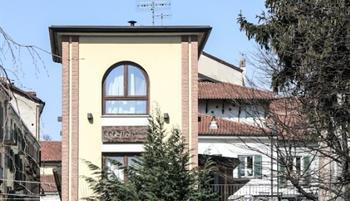
Set in a historic building, with great attention to detail, this B&B is known for its hospitality. There are six bedrooms which are decorated differently, but all have a relaxing ambiance. There is a garden terrace where you can have a glass of wine.
Upon departing Ivrea the walk goes through open countryside and passed the biggest moraine in Europe (the debris left by a melted glacier) and many small lakes created during the glacial era. Before reaching the interesting little village of Bollengo where it’s possible to visit the renovated Church of San Pietro.
The second part of the walk offers exquisite views over the valley and before long the crystalline Lake Viverone glistening in the distance. The lake is also an important archaeological site and during the Bronze Age villages made of stilt houses were present here. It’s possible to spot birdlife such as coots, grebes and mallards. Perhaps have dinner overlooking the lake this evening.
Ascent/Descent: 170m/170m

This modern building is located on the shores of Lake Viverone. Perhaps have dinner 'al fresco' on the terrace with the mountain peaks on the horizon. The hotel also has an outdoor pool and Jacuzzi.
Leaving the peaceful shores of Lake Viverone and the town centre this morning, the path heads through a wooded area and over one of the last hills before reaching the Padana Plain below, also known as the Po River Plain. This area stretches 400 miles wide in an east-west direction and is an important agricultural area in Italy.
Santhia, is an important junction on the Via Francigena as it is where two branches join; one that goes to the Gran San Bernardo Pass and the other towards the Susa Valley, the longest in Italy. You are now in the heart of Piedmont.
Ascent/Descent: 130m/180m

The Vittoria Hotel offers its guests all the necessary amenities to make your stay relaxing and peaceful.

This small hotel offers a warm welcome and is often frequented by pilgrims walking along the Via Francigena. Enjoy the authentic dishes before spending a restful night in the cozy rooms.
The initial stage of the walk today goes along tracks through the flat plains and in sight of an expanse of fields water-logged for rice cultivation. There is a complex network of water channels as rice has been cultivated here for over 300 years and the countryside is broken up by large red-brick farmhouses, framed by rows of poplars. In the spring the flooding of the paddy fields results in an area that resembles a large lake, which on clear days mirrors the snow-capped Alps.
In Vercelli explore its medieval Cavour Square surrounded by ancient houses. Be sure to visit the Basilica of St Andrew, a masterpiece of Gothic architecture.
Ascent/Descent: 12m/66m

This bed and breakfast is in the historical centre of Vercelli in a quiet neighbourhood. It is a short walk away from Vercelli Train Station. Breakfast is served on the terrace or in the breakfast room. Each bedroom is decorated in a contemporary style.
Walk from Vercelli through the countryside and arrive at the banks of River Sesia. Crossing the border from Piedmont into Lombardy you are getting closer and closer to Rome. The area here becomes wooded and the walk goes through the historic village of Palestro, which is located on the banks of the river. Leaving the river behind and the route continues to Robbio, a place that was settled in Neolithic times.
Take the train from Robbio to Mortara (15 minutes, fare payable locally) to reach the overnight stop.
Walk Vercelli to Robbio, 20km Ascent/Descent: 10m/20m
Optional Walk Robbio to Mortara, 14km Ascent/Descent: 10m/20m
Please note:
If you are keen to walk from Robbio to Mortara, it is possible to add a second night in Mortara. In this case, you would walk from Vercelli to Robbio, then take the train to Mortara as usual. The next day you would take the train back to Robbio and walk to Mortara (route instructions are provided in the Mac Adventure App). If this is of interest, please let us know at the time of booking and we will be happy to provide a quote for you.

Family run small hotel and restaurant in the centre of Mortara, just 50 metres from the train station. In the hotel, which was renovated in 2019, you can dine in a lovingly furnished restaurant with traditional dishes and friendly service before you can look forward to a restful night in the cozy rooms.
Walking through the flat countryside of the Pavese Plain where farmhouses dot the way along the wide cultivated fields and rice paddies. There are barely any trees and the ‘cavi’ irrigation waterways divide up the landscape. This area is home of the local delicacy ‘Salame d’Oca’ (goose salami). The raising of geese is a very ancient tradition here and was inspired by the numerous Jewish communities in the Lomellina region as this was an alternative to pork products. This is a good area to raise geese due to the widespread availability of natural freshwater springs and the presence of abundant tender grasses.
Ascent/Descent: 10m/20m

Located by the ancient pilgrimage route of Via Francigena, this small hotel is located in a building from 1890 and still has its frescoed ceilings. It’s just a 5-minute stroll from Teatro Martinetti, which is the central point of the town. The hotel has a bar and outdoor area.
Today’s walk begins passing over a fertile plain with the countryside that is stunning in its raw simplicity. The landscape here does not have the majesty of the Alps or the vivid colours of Tuscany, but the unobstructed shifts of light as the day progresses are inspiring. This area is another major producer of rice, the route follows alongside many rice paddies with farms standing like an oasis amidst them.
Upon reaching the Ticino River walking along its wide, sandy banks and perhaps stopping for lunch in one of the two riverside cafés. The Via Francigena joins up with the E1 trail today to follow the along the riverbanks and through Ticino Park. The Ticino River is a distinctive shade of blue due to the long time it spends purifying in Lake Maggiore before making its way here.
The destination is Pavia which has a famous covered bridge, Ponte Coperto, which the route enters via. Originally constructed in the 14th century, today’s bridge is a modern copy, due to the original being destroyed by bombing in World War II. As well as the bridge there are an incredible array of artistic and cultural treasures to explore in Pavia. Of particular interest is the Duomo and the Basilica of San Pietro in Ciel d'Oro.
Ascent/Descent: 46m/64m

Ideally located in the Railway Station Square. The hotel is just a short walk from the historical centre of Pavia. The bedrooms either overlook the square or a private courtyard.
Leaving the city of Pavia the walk goes through the familiar terrain of the cultivated plains, never straying far from the Ticino River, which is a tributary of the Po River. In medieval times this area would have looked quite different. The river was wider and much of the land was inaccessible marshes. The monks of Santa Cristina helped to cultivate the land and turn it into the fertile plains that are present today.
Interesting architectural ruins can be spotted along the route, mainly religious buildings such as the majestic façade of Saint Michele in Pavia, to the little Church of Saint Giacomo della Cerreta. Perhaps, take a break and visit the Castle of Belgioioso, an ancient neo-classical residence built in the 14th century by Gian Galeazzo Visconti.
Arrive in Santa Cristina. A transfer will be arranged to the hotel just outside San Colombano al Lambro.

All units come with a seating area, a flat-screen TV and a private bathroom with free toiletries, bidet and shower. Guests at the bed and breakfast can enjoy a buffet or an Italian breakfast. A terrace can be found at Agriturismo San Bruno, along with a garden.
This morning you have 3 options: 1) you can walk straight from your accommodation Agriturismo San Bruno to Piacenza (the longer option). Please notice, that you need to take a ferry at 8:30/ 9:00 am in Corte St. Andrea and you have to walk almost 2 hours to reach the ferry terminal. 2) take a short transfer to Lambrinia (included, 5 minutes) to continue your walk to Piacenza.
3) take a transfer to Corte St. Andrea (included, 15 minutes) to take the ferry at 8:30/9:00 am and walk from Soprarivo to Piacenza.
Lambrinia takes its name from the River Lambro, your path then crosses the River Po. Amazingly this is the very same place where Sigeric the Serious crossed many thousands of years ago. He was the Archbishop of Canterbury from 990 to 994 and his return pilgrimage along the Via Francigena from Rome to Canterbury is recorded in a manuscript in the British Museum in London.
You have now crossed the border from the Lombardy region into Emilia Romagna, an area of fertile plains, hills and mountains. At times it is necessary to avoid the official Via Francigena route and walk along routes that have been chosen for their scenic beauty and lack of traffic.
Please let us know what your preference would be so we can organize a transfer if necessary. Please note that we will not book the transfer automatically.
San Colombano al Lambro to Piacenza: 29km/18mi, Ascent/Descent: 53m/ 43m
Lambrinia to Piacenza:25km/15mi
Please note that the total distance includes a ferry (remove 4km for the total walking distance).
Soprarivo/ Calendasco to Piacenza: 17km/10,5mi

La Maison de Ville is a charming B&B born from a meticulous renovation that combines timeless elegance with contemporary comfort. Every detail has been carefully curated to create a warm and welcoming atmosphere.
Ideally located in the historic center of Piacenza, it allows you to reach the main square, museums, boutiques, and traditional trattorias within minutes.

Characterful B&B right in the heart of the city. The B&B is your second home in Piacenza and offers many amenities to make your stay as pleasant as possible. Enjoy a healthy breakfast with great views over the Piazza de Cavalli.
Continue your route on the Via Francigena. Take time to first explore the Piazza Cavalli, to admire the facade of the town hall Il Gotico (dating from 1281) with its five pink marble arches. The Duomo di Piacenza, is a valuable example of Norther-Italian Romanesque architecture, with a Veronese pink marble and gilded stone facade.
Today it is wise to avoid the official route as it runs along the extremely busy Via Emilia. Take the trail that runs parallel with it which will take you along the relaxing landscapes of the Po River plain. Towards the end of your walk today you will begin to encounter some undulating trails as you are now approaching the foothills of the Apennines. Reach Carpaneto, which is a small town set within these foothills.
Ascent/Descent: 93m/40m

The Hotel is housed in an old stone farm building which has been completely renovated. It has maintained the appearance of the cottage-style country house, elegant and friendly at the same time.
A delightful shorter day of walking awaits as you travel through vineyard-covered hills and an area famed for its Colli Piacentini wines.
Arrive in Castell'Arquato, a charming and picturesque hilltop town which has some of the most imposing Romanesque churches on the whole of the Via Francigena such as St Mary’s. However, the masterpiece of the town is the fortress and its tower, up which you can climb for a fantastic view over the surrounding countryside.
Ascent/Descent: 216m/169m

The perfect combination of art, culture, history, gourmet cuisine and first-class service makes Hotel Leon D’Oro the ideal destination for those travellers who want to combine luxury with the most authentic Italian hospitality.
Today's walk is along a peaceful and flat stretch of the Via Francigena, where you can contemplate your experiences of the previous days - the beautiful countryside, friendly people and great food you'll have experienced!
On arrival in Fidenza, we recommend that you visit the Romanesque Duomo, built of pink stone and dating from the 12th century. See the statue of the apostle, Simon Peter, at the front of the cathedral which is pointing in the direction of Rome. An inscription reading “I show you the way to Rome“ makes this one of the world’s first road signs.
Ascent/Descent: 358m/449m

The Astoria is directly run by its owners who provide a friendly service. A calm and relaxing hotel with all necessary amenities and services. Next door you will find a characteristic restaurant that is open at both lunch and dinner.
Today’s walking takes you through hilly terrain as you are now in the foothills of the Apennines which run the length of the Italian peninsula. You will walk through farms, vineyards and gorgeous undulating countryside before reaching Fornovo, a town known officially as Fornovo di Taro as it is located in the Taro River Valley and only a few kilometres from Parma, a city famous for its cured hams (prosciutto) and cheeses. Perhaps you can sample some of these delicious local specialities when dining tonight.
Ascent/Descent: 621m/532m
Set in the relaxing coutryside of Parma in Fornovo, this comforable Bed and Breakfast is the perfect location to join the Via Francigena. The B&B is 39km from Parma train station. All rooms are facilitated with a coffee machine and free WIFI.

A basic hotel with all necessary amenities and services. The restaurant offers local Italian cuisine that meets the tastes of guests at Al Ponte Locanda. Here you can try particularly good ravioli, well-prepared gnocchi and perfectly prepared tagliatelle.
Fuel up on an energising breakfast before you set off on your challenging day's walk, today you begin your climb to the Cisa Pass. Situated at 1,040m it divides the Ligurian and Tuscan Apennines. The superb mountain scenery is a highlight and in addition to this, you will pass through the Salti del Diavolo, unusual rock formations which were formed over 80 million years ago. Translated as the Devil’s Jumps, they are located in the Baganza Valley, stand a few metres in height and rise like needles up from the valley floor. When walking through this strange geological landscape you may feel like you are on another planet!
Ascent/Descent: 1121m/477m
Please note that due to accommodation limitations along the route, you will receive a transfer from Cassio to Berceto (and back the next morning to continue your walk as usual).

Located in Berceto’s historic centre, just a few steps from the Romanesque cathedral (the Duomo), La Casa dei Nonni offers different accommodation types with its five rooms. The breakfast room has been obtained from a picturesque arch cellar which once belonged to the ancient houses of the medieval castle of the Rossi Earls.
This morning we have arranged a transfer to collect you from your accommodation and transfer you back to Cassio, to rejoin the trail where you left off the day before.
First, take a steep climb through a shady forest and then pass through the appealing little 'village street' or borga-strada of Castellonchio, whose houses were built next to each other and lined the Via Francigena when pilgrimages were at their peak. Continue until you reach the crest of a hill from where you can see Berceto, your next destination nestled in the valley below.
Berceto is also located on the Via Romea and used to be a crossroads for commerce between the Po Valley and the Tyrrhenian Sea.
Ascent/Descent: 269m/262m

Located in Berceto’s historic centre, just a few steps from the Romanesque cathedral (the Duomo), La Casa dei Nonni offers different accommodation types with its five rooms. The breakfast room has been obtained from a picturesque arch cellar which once belonged to the ancient houses of the medieval castle of the Rossi Earls.
Today you leave the Emilia Romagna region behind and enter Tuscany to enjoy some of the most stunning scenery along the Via Francigena. Upon crossing the Cisa Pass the views will leave you breathless (and not just because of the climb!). Descend through lovely woods with beech and chestnut trees, eventually arriving in Groppodalosio later this afternoon. Sip a much-needed refreshing beverage in a local café.
Ascent/Descent: 644m/941m

B&B Temperance is an ancient stone house immersed in nature, a short walk to the beautiful natural pools of the Magra River. Temperance was born from the project of two guys who decide to leave their cities, to get closer to a more natural lifestyle in the beautiful Lunigiana and to welcome the pilgrims of the Via Francigena. It's located just a few meters from the Via Francigena, in Pontremoli.
Along the way today you will see many interesting pilgrimage sites, such as small alters, little chapels and signs that during medieval times faith was so much a part of life. After reaching Cavezzana d’Antena, which has a natural spring, take the trail to the village of Groppoli, after which you cross over a bridge that was built in 300 AD.
Ascent/Descent: 339m/644m

The simple rooms, as well as the local cuisine characterize the house in the small village. Known in particular for its exceptional pizza right on the Via Francigena and its courteous service, it is a popular meeting place for tourists and locals alike.
Slowly descend through fragrant Italian hills as your trail reaches the River Magra Valley. It is just outside Pontremoli where you will discover the St Annunziata Church which was built in the 15th century and commemorates a time when the Virgin appeared to a young shepherd girl. Continue descending to the Pieve di Sorano inside which there is an original Statue Stele. Arrive in Aulla, lying in the shadow of the imposing 16th century Fortress of Brunella and at the confluence of the Magra and Aulella rivers. The town was a significant trade and pilgrimage centre and therefore an important place on the Via Francigena.
Ascent/Descent: 287m/395m

The Demy Hotel is a brand new building owned by the family De Micheli who carefully manages it. The hotel is equipped with every comfort to ensure you have an enjoyable stay.
During your walk today you will cross over into Liguria and walk along the final slopes of the Apennine Mountains before catching your first sight of the Mediterranean Sea glistening in the distance. Reach the quaint medieval village of Bibola which is situated on a hill a few miles south of Aulla and visit the Church of St Bartholomew home to beautiful Ligurian mosaics.
Continue along the trail to the ruins of Brina Castle and then begin your descent into Sarzana, your final destination for today and a town that has ancient origins and was first mentioned in the 10th century.
Ascent/Descent: 588m/634m

This hotel is located in the lovely city centre within a late nineteenth century building. There are fourteen comfortable rooms which are divided over two floors.
Walk past the ancient Sarzanello Fortress, at one time a bishop’s residence and then continue along trails with views to the Apuane Alps to your left. You are now in the Carrara area which provided the white marble from which Michelangelo sculptured his David. The mountains in the distance have white peaks, a result of the white marble and it seems as though they are snow-capped.
Ascent/Descent: 130m/140m

Hotel Carrara is a 3-star hotel, open all year round, located a few steps from the Carrara train station, a few kilometers from Carrara located at the foot of the wonderful Apuan Alps home to the famous marble quarries and only 3 km from the beaches of Marina di Carrara. Guests can relax in the covered outdoor courtyard.
Please note that we recommended walking from Avenza to Massa, then taking a train from Massa to Pietrasanta. From Pietrasanta you can rejoin the route to Camaiore. We suggest this route option to enhance your experience along the way.
Today’s walk is undulating as the trail is situated on the hillsides overlooking terraced vineyards, rather than along the coast. You will walk along quiet roads and trails, past river and streams, over stone bridges and through plenty of hamlets and villages. After a short train ride from Massa to Petresanta you continue on through beautiful forested mountainsides to arrive in Camaiore, situated just inland from the Versilian coast. This town’s growth in the Middle Ages was due to its location along the Via Francigena.
If you would like to walk from Massa to Camaiore (total distance: 38km/23.5 mi) we suggest you get in touch to add an extra night to walk this section over 2 days to make it more manageable.

The small hotel has 12 comfortable rooms and impresses with its central location and the individually and lovingly furnished rooms. Authentic dishes with local produce delight guests in the adjoining restaurant.
Today leave the foothills of the Apuane Alps behind and take trails through pretty agricultural lands, woods and alongside streams. Initially, you will be gradually walking uphill but then descend into a valley which eventually leads you into Lucca. Walk through the Serchio River Park before arriving in the old town centre.
Lucca is without question one of the highlights of your walking tour and is renowned for its Renaissance walls that are still intact. They are incredibly wide in some places and are used as a pedestrian promenade. Lucca was founded by the Etruscans but also occupied by the Romans and the rectangular street plan is a reflection of their design. The Piazza San Michele occupies the site of the ancient Roman forum.
Ascent/Descent: 516m/526m

Hotel La Luna is located in the heart of historic Lucca, just minutes away from Piazza Anfiteatro, and the train station is just a 15-minute walk away. Situated in a renovated 18th-century palace, the hotel is the perfect welcome to Tuscany. After a day’s sightseeing, guests can enjoy a drink at the bar which is open until midnight.

The B&B Maison Gentile offers contemporary furnished rooms in newly renovated accommodation. The rooms and suites are tastefully decorated with Italian flair and feature amenities such as a private bathroom, air conditioning, flat-screen satellite TV and Wi-Fi. A delicious intercontinental breakfast buffet awaits guests every morning, and the friendly staff are on hand to fulfil individual requests. The B&B is located in the heart of the historic centre of Lucca, between Piazza Napoleone and Piazza San Michele.
We advise spending some time in Lucca before setting off towards Altopascio as there is so much to see here and it is a delightful city to stroll around and explore. The Piazza San Michele is fringed by restaurants and cafés so this is a great place to stop for a cappuccino and soak in the atmosphere. Explore the wonderful Piazza Anfiteatro and Lucca’s major art museum, housed in the Villa Guinigi. Be sure to walk some or all of the city walls, which have a broad, tree-lined promenade.
This afternoon make your way along trails via the towns of Capannori and Porcari, both of which have pretty little churches. Your destination for the day is Altopascio which is known as the "town of bread", due to its bread-making traditions. Here you will find the Spedale, an infirmary which was in use during medieval times for pilgrims. There is an interesting church and bell tower in the centre of the town.
Please note that the majority of the walk today is along roads. Therefore if you prefer you can spend longer in Lucca and take a 15-minute train ride to Altopascio (payable locally).
Ascent/Descent: 20m/10m
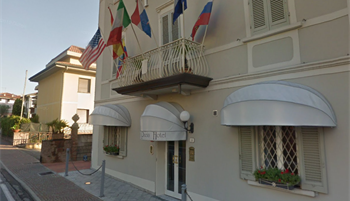
Hotel Paola was built in 1880 in the midst of the Belle Epoque. The Art Nouveau style building has now been restored to its ancient splendor of two centuries ago, transforming it from an elegant villa into a hotel rich in history and charm. Carrara marble floors, plaster stuccos, and wooden and terracotta ceilings typical of Tuscany can be found. The splendid terrazzo staircase gives access to the eleven rooms, all renovated and tastefully furnished.
Today you will walk along a short stretch of original medieval pavement before arriving at the Ponte a Cappiano, a fortified bridge built by Cosimo de’Medici in the 16th century. The pretty town of Fucecchio is located over the Arno River and once you have passed through (perhaps stopping for lunch in a local café) you will then head upwards into San Miniato, a medieval village set atop three small hills at the very centre of Tuscany. It occupies a strategic location, at the intersection of the Florence-Pisa and Lucca-Siena roads, hence its historical importance. During the Middle Ages, there was a constant flow of both friendly and hostile armies, traders and travellers from near and far.
Depending on your energy levels you can choose various distances for today's walk. Either start from your accommodation in Altopascio (29km), Galleno (22km), or Ponte a Cappiano (15km). Please let us know in advance if you would like to shorten this day.
Ascent/Descent: 260m/140m

Hotel San Miniato is set in the medieval San Miniato, in what was once a convent. Enjoy the hotel's spa, with Turkish baths, a sauna and massage services available.
Walk through stunning Tuscan landscapes and oak woods, which then give way to vineyards. Famous for its fine red Chianti wines, such as tempranillo and Sangiovese, if you are travelling in the spring and summer the vines will be in full bloom and if travelling in the autumn they will be deep reds and browns.
Combining almost perfect weather and soils that produce these world-renowned wines, there is evidence to show that the Etruscans cultivated and even experimented with vines here. Along the route, you can visit two interesting churches, Pieve di Coiano and Santa Maria a Chianni, the latter situated on the side of a valley and the former positioned close to Gambassi with a beautiful façade.
Arrive in Gambassi Terme, located on a hill 350m above sea level. The town has been known for its production of glass since medieval times.
Ascent/Descent: 429m/254m

The sublime house captivates with its old charm and its small garden with jaccuzi. Renovated in an Art Nouveau style, enjoy the formal gardens and spa next door. The excellent service, the cozy rooms and the outstanding breakfast leave nothing to be desired.
Today’s walk is relatively short as this gives you time to explore San Gimignano this afternoon. Once again you will be walking through the gorgeous Chianti vineyards. Heading down the trail you initially pass by Riparotta and a bridge over the Rio Casciani. The trail undulates over a series of small hills and along a stretch called the Siene Val d’Elsa. Here you see the ruins of an old castle and the isolated Church of Santo Pietro which was mentioned in in 1109 as a place of worship by pilgrims.
Enjoy your first panorama of San Gimignano’s famed towers, built by wealthy local families to demonstrate their power in the 12th century. At one time there were 72 towers, but only 13 remain. Spend time this afternoon discovering this town, one of the most famous in Tuscany. Registered as a UNESCO World Heritage Site, San Gimignano still retains its medieval atmosphere and it is a pleasure to wander through the narrow streets and soak up the ambience.
Ascent/Descent: 384m/372m

The L'Antico Pozzo is located within the ancient walls of the medieval historic centre of San Gimignano, in a renovated 15th century palace. Enjoy the bar with its wrought iron tables in the delightful internal courtyard.

Locanda Il Pino is a charming B&B in the heart of San Gimignano, run by a friendly family. With its elegant country-style rooms and delicious breakfast in the in-house restaurant, it is the perfect base from which to explore the beauty of San Gimignano.
At the beginning of today's walk follow trails through mostly fields and vineyards. As it progresses you will then walk through wooded areas and farmland. You will also pass through a couple of small towns/hamlets and the more or less abandoned settlement of Fabbricca. Upon reaching Gracciano d’Elsa you make your way to Colle di Val D'Elsa via a nature trail which criss-crosses the Fiume Elsa with its stunning waterfalls and surrounding woodland.
Ascent/Descent: 276m/451m

In Colle Val D’Elsa, in the heart of Tuscany, La Vecchia Cartiera Hotel with its 38 rooms of various types welcomes you in a discreet and familiar atmosphere. Set in the centre of Colle Val d'Elsa, La Vecchia Cartiera was once a paper mill. Now it offers air-conditioned rooms and a fine restaurant specialising in traditional Tuscan cuisine for lunch and dinner. Each morning at La Vecchia Cartiera a large continental breakfast is available buffet style.
Today the hike leads through picturesque Tuscan landscapes and offers a mixture of nature and history. The route runs through rolling hills, vineyards and olive groves. Along the way, you can discover charming villages as Strove and other historical sites, including ancient churches and ruins that reflect the rich culture of the region. Monteriggioni itself is known for its well-preserved medieval city walls and impressive architecture, which offer a glimpse into the past.
Ascent/Descent: 270m/137m

Hotel Monteriggioni is a four-star hotel housed in a 17th century residence, in the heart of the medieval fortress town. The architecture, respecting the original style, perfectly integrates the hotel services with the exclusive environment of the Tuscan village. The hotel has an outdoor swimming pool, jacuzzi, and garden.
Walk through woods to the castles of the Chiocciola and Villa before arriving at Porta Camollia, the traditional access road on the Via Francigena into Siena.
Siena is a town well-known for its Palio horse race which occurs twice a year, its medieval buildings and the wonderful Piazza del Campo. Sit in an outdoor café within the piazza whilst viewing the medieval houses and buildings, particularly the Palazzo Publico and the Torre del Mangia, both architectural treasures.

Situated in Siena city centre, it's perfect for exploring on foot. Built in around 1870 as a Neoclassical villa, it was restored in 2004, keeping its original style as well as its beautiful, frescoed common rooms. The hotel has a restaurant, bar, terrace, and small garden to relax in.
Depart from Siena along the official Via Francigena road, the Porta Romana. The trail meanders through serene farmland, rolling hills and small hamlets crisscrossing the Via Cassia all the way. En route is the imposing medieval building, the Grancia di Cuna which served as protected storage for food supplies in the Middle Ages and which offered hospitality to pilgrims and travellers.
Transfer from Grancia de Cuna to Buonconvento (this shortens the walk from 32km to a more manageable 18km).
Ascent/Descent: 120m/273m

This agriturismo has been converted from farm buildings into a stunning country hotel including both an indoor and outdoor swimming pool, garden, spa with sauna, steam room and massages available (additional charges apply; advance bookings recommended). The agriturismo is in a natural truffle zone, so this is often on the restaurant's menu along with local wines and organic produce grown on the farm.

This charming country house stands on the site of the ruins of a 12th century castle. The house is nestled amongst cypress and olive tree groves and overlooks Buonconvento village. Rooms are decorated in a traditional rustic style. There is a rooftop garden and reading lounge.
En route to San Quirico d’Orcia you pass through Brunello vineyards there will the opportunity to visit a nice winery at Torrenieri. Cross the railway line and carry on through wineries and iconic landscapes to San Quirico, a delightful walled town. You have just completed this section of the Via Francigena and perhaps you would like to reward yourself with a glass of delicious Chianti in the medieval town square.
Ascent/Descent: 528m/264m

Located in a beautiful lake side setting just beyond the city walls of San Quirico, this hotel offers a cosy and intimate atmosphere. All 42 rooms are comfortable and well equipped. The hotel has a beautiful swimming pool and elegant gardens for you to enjoy.
En route, there will be perfect views of Monte Amiata. One of the most important stops on this pilgrimage route and a highlight of the tour. Today's stage takes you through the picturesque Tuscan landscape. It begins in the charming medieval village of San Quirico d'Orcia, known for its well-preserved architecture and gardens. The path winds through gentle hills, vineyards, and olive groves, passing by small farms and traditional villas, offering numerous opportunities to enjoy the breathtaking views. The route includes both tranquil sections and some steeper passages.
Ascent/Descent: 398m/450m
Podere Passalacqua is located in the heart of the Val d'Orcia, and was built on the Via Francigena. The hotel is on the hill, near the river, and among meadows and allows for absolute silence and breathtaking views. The hotel is halfway between Bagno Vignoni and Bagni San Filippo.
The route begins at your accommodation, a few kilometres outside Gallina, a small, charming village surrounded by rolling hills. You first cross rural areas, with views of the typical Tuscan fields and vineyards. The route leads through forests and over rolling hills.
A highlight of this stage is reaching Radicofani, a historic village perched on a hill. Here you can visit the impressive Rocca di Radicofani fortress, which offers a marvellous view of the surrounding area. The village itself has a rich history and charming alleyways that invite you to linger.
Ascent/Descent: 373m/146m

La Selvella is an old farmhouse which has been completely restored. Their farm produces organic olive oil, a variety of vegetables, poultry, and free-range eggs. There is a lovely swimming pool situated at the front of the house.
Ponte a Rigo, your first destination today is surrounded once more by beautiful Tuscan scenery. This road set high above the valley was the official route until the 16th century when a bridge was built over the River Paglia. Close by is the Via Cassia an ancient route from Rome to northern Italy and along which many thousands of people travelled in the Middle Ages.
Proceno used to be situated on the border of the Grand Duchy of Tuscany and the Papal States. For pilgrims arriving from the north this village provided their first encounter with the Papal States. As a result Proceno became an extremely important stop on the Via Francigena. Your accommodation was built during these times and is a rare example of a medieval fortification that has survived in its original state, and now converted into lodgings.
Ascent/Descent: 434m/623m

A stunning guesthouse located in beautiful, medieval, fortified surroundings. Enjoy the swimming pool and restaurant, surrounded by the gardens with views over the peaceful, untouched countryside. A stone passageway will lead you to the ancient wine cellars, where more tables can be found to enjoy the best wines of central Italy to enjoy before or after your meal.
You may wish to have an early start today as this is a long day of walking. Pass by Acquapendente, named for a small stream that flowed down the hillside. In 1845 Charles Dickens walked along the Via Cassia and into Aquapendente which he describes in his writings. It was also the first stop in Italy in the travels of Saint Roch in the early 14th century. This saint supposedly spent several days in the hospital here curing plague victims.
One of today’s highlights is seeing Lago di Bolsena coming into view. Formed in the crater of a volcano this lake has crystal clear waters and is a jewel in the centre of Italy. It is here in Bolsena where you will find the St Cristina Church built in memory of the miracle that is at the origin of the Catholic celebration Corpus Domini. Spend tonight in a charming hotel on the shores of the lake.
Ascent/Descent: 356m/444m

A lovely hotel set within a country park in serene and calm surroundings. It's located right on the shores of Lake Bolsena, yet it is not far from the historical centre of the town, which is easily reachable on foot. It features two restaurants serving food from the region, with views of either the lake or gardens. Rooms come with either a balcony where you can admire the breathtaking view of the lake, or with a terrace that overlooks both the wonderful park and outdoor swimming pool.
Walk along the crest of hills that surround the eastern side of the lake with great views of the Cimini Mountains and the lake itself. Pass through woodlands and farmers' fields before arriving in Montefiascone, your final destination for today and for the week.
Spend time here discovering the wonderful frescoes of San Flaviano, many of which are attributed to unknown Sienese painters. Also visit the Fortress of the Popes, an imposing building which dominates Montefiascone’s skyline.
Ascent/Descent: 458m/176m

Hotel Urbano V is situated in a very tranquil position, in perfect balance with the architecture of the historical centre, glorious land of the famous wine "Est!Est!!Est!!!". Completely restored in June 2002, it is one of the most ancient palaces in town, where noble families and popes have lived since the XIV century.
The trail that you are following today takes you on a plain that divides Lake Bolsena from the Cimini Mountains. A great highlight is encountering the Bagnaccio thermal pools. Don’t forget to pack a swimming suit so that you can take a break here. The pools are steamy and milky green and are the result of a natural volcanic hot spring. The Romans used to bathe here and little has changed at this site for 2,000 years.
Arrive in Viterbo, the best preserved medieval town in Lazio and the 13th century residence of the popes.
Ascent/Descent: 136m/385m

Located in the middle of the medieval centre of Viterbo and just a 5-minute walk to the cathedral. The warm and friendly B&B offers a pleasant stay after a long day.
Today you have two options: Option B leads through the ancient and unique ‘Vie Cave’ of the Etruscans. These are paths dug into the tuff with walls that are sometimes over 20 metres high. It is still not known exactly what these impressive paths were used for. It is assumed that they could have been connecting paths or rainwater channels. Most of today's stage runs along the Via Francigena cycle path, over natural paths, gravel tracks and tarmac roads and is a shorter alternative to option A.
Option A follows a path through oak and chestnut woods until you reach the village of San Martino al Cimino. Here you walk past the old monastery, a former Cistercian abbey. The route continues on alternating muted forest paths and some sections on tarmac roads. You will be rewarded with panoramic views before entering the forest again and walking down shady paths to the village of Tre Croci. From here, you reach Vetralla via a short stretch on a gravel road.
Option A, 21km/ 13mi, Acent/ Decent: 432m/485m
Option B, 16km/ 10mi, Acent/ Decent: 143m/169m

Hotel da Benedetta was opened by grandmother Benedetta Rosati in 1959. In more than sixty years, our family has seen the territory, the pilgrims and its own hotel change, but never the tradition and the identity legacy of grandmother Benedetta.
Run by the Pasquinelli family, recently renovated and with a green soul, the Da Benedetta hotel restores the spirit of this splendid land, Tuscia. A soft land, of passage, in which culture is a legacy of ancestors, of wayfarers.
You leave the historic town of Vetralla and hike through a varied landscape characterised by rolling hills, forests and farmland. On the way to Sutri, you will pass picturesque villages and enjoy breathtaking views of the surrounding countryside. The route leads through shady forests and along vineyards, which makes the hike particularly pleasant. A highlight of this stage is reaching Sutri, a town known for its Etruscan ruins and impressive rock church.
Acent/ Decent: 259m/302m

Set in a historic farmhouse built on a natural tufa rock, right in front of the Roman Amphitheater in Sutri. At B&B Le Terrecotte it is possible to relax and savor homemade biscuits at any time, accompanied by a hot tea or herbal infuses where one can talk, read, think, sleep, reflect and create… at peace with the world and with yourself.
Today includes walks through fields and past rivers and impressive waterfalls, such as Monte Gelato which is a great place to relax, swim and have a break. Continue to follow the trail which becomes a flagged Roman road and which eventually leads you to Campagnano di Roma, first mentioned in 1076. As you approach you will see it rising above the landscape.
Ascent/Descent: 240m/224m

This Hotel is located in Camps Benigni Di Roma, a typical town of Lazio, which is close to the lakes of Bracciano and Martignano. It’s almost entirely surrounded by the Park of Veii and the Monti Sabatini volcanic complex.
On your route today pass the Sanctuary of the Madonna del Sorbo which is dramatically positioned on a rocky spur overlooking the Sorbo Valley and then pass the interesting Etruscan ruins of Veii which in the 6th century was the greatest centre for the fabrication of terra-cotta sculptures in Etruria. In its heyday Veii was as big as Athens and had a population of about 100,000 inhabitants. Spend time here exploring the ruins before continuing on to La Giustiniana.
Ascent/Descent: 379m/524m

Ideally located close to Rome, one of the most beautiful cities in the world, this family run converted farmhouse will take your breath away. With friendly staff and a welcoming atmosphere, this accomodation will make you feel right at home! Enjoy a healthy breakfast in the morning.
From La Giustiniana you follow the route on the Via Francigena along the Via Trionfale.
Should you follow the Via Trionfale into Rome you will also walk through two major parks, the Insugherata and Mt Mario. It is amazing when you behold the sight of central Rome with its many iconic buildings and particularly St Peter’s which you will see from the top of the 139m Mount Mario on the north-western side of the city. It’s a great place to sit and have your packed lunch before walking along the Viale Angelico to complete your journey.
Ascent/Descent: 105m/264m

The PapaVistaRelais guest house has recently opened and is delighted to welcome travellers and pilgrims alike to the Eternal City of Rome and to the Holy City of the Vatican. With just six intimate, cosy and delicately fashioned guest rooms, they offer a unique blend of top quality surroundings in a perfect location at the greatest value for money.
After breakfast your walking holiday will come to an end. See the Travel & Transfers section for some useful details for your onward travel.
This trip has a carbon score of 6kg per person per night, meaning it’s one of our best trips! For comparison, a carbon count of 6kg is equivalent to 4.5 ham and cheese sandwiches from the store. Here at Macs, we pride ourselves on being a responsible travel company and continue to adopt, develop and innovate ways to positively impact the environment. Find out more information on how we've carbon counted our trips.
Other Information
Is it for me?This route is it takes you from the foot of the Alps all the way to the ancient city of Rome and along the way you’ll see a huge range of different landscapes and architectural styles, as well as sampling the different tasty regional specialities and wines. The Via Francigena is not as frequently walked by pilgrims as the Camino in Spain and Portugal and is therefore a less crowded and less well-known walking route. This does however also mean that the services along the way aren’t as seamlessly setup for pilgrims as you will find on the Camino, and you won’t meet as many fellow other travellers making the same journey as you. If you are joining us for the full Via Francigena route, then you might like to consider building in a few rest days to your itinerary to give your feet time to recover and also to savour some of the historic towns and cities and rolling countryside that you will be walking through.
Pilgrimages | For those looking to follow a path of self-discovery. Our Pilgrimage and Camino routes take you on a journey through diverse landscapes and local flavours, while meeting like-minded adventurers along the way.
Inn to Inn Walking | Walk from place-to-place changing accommodations each night. Generally staying in B&Bs, inns, and guesthouses.
Solo Travellers, Families with Teens
The minimum age for this tour is: 12 Years
The first few days of the walk is the trickiest due to the mountainous terrain. The different stages of this tour are rated between 'moderate' and 'moderate to strenuous'. Therefore overall, we have rated this as 'moderate to strenuous'. It is possible to arrange for additional nights and rest days along the way. If this is something you would like to do, then please speak to us when booking. The daily distances vary quite a lot between shorter and longer walks, so you must be capable of managing the longer distances. You need to be in good physical shape to complete the Full Via Francigena as there are also some elevation gains and losses along the way, and a substantial about of mileage will be covered. As this route tries to remain as true to the original pilgrimage route as possible, you will not only walk on trails and unpaved roads but also on asphalt part of the way. The ‘traditional’ walk is alongside some busy main roads, which is why at times we give other suggestions (especially near Rome) with alternate GPX tracks. Please take care when walking along roads and always be mindful of other road users.
In spring and summer in particular, the hiking trails may be overgrown in places. We recommend that you pack long trousers/pants and long-sleeved tops in your day pack just in case of this occurrence.
You need to be a regular walker and in good physical shape to complete the Full Via Francigena. If you are doing shorter stages then these are less demanding, but the per day mileage still includes longer distances on some days and a couple of the stages include ascents and descents, especially in the foothills of the Alps at the start of the Via Francigena route. We would recommend taking training walks carrying your daypack ahead of going on this trip.
During your trip you will stay in a variety of accommodations. The properties range from private rooms in pilgrims' hostels to 2, 3 and 4* hotels as well as B&B's and guesthouses. At times you will be staying in remote towns and villages, therefore the accommodations in these places are the best that these particular areas have to offer. If you require single rooms for your party we would be happy to accommodate you. Solo walkers are also welcomed.
Important: Due to the remote location of some of the smaller towns and villages along the way it is possible that some of your overnight hotels will be a few kilometres from the route or in a nearby town or village. If this is the case, you will always receive directions to and from the trail in your route notes. Please be aware that this may result in slightly longer or shorter walking days.
Meals
Daily breakfasts are included. Breakfasts are usually continental or Italian-style with a choice of bread, croissants, meats, and cheeses. Sometimes it is possible to order packed lunches at your hotel or B&B the evening before or you can buy lunch in groceries, cafes, and restaurants en route. You can opt to include dinners as well if you wish.
The trail in the most part is well marked but in some of the agricultural areas, such as the cultivated lowlands, this does become sparser. Along the length of the route, it also travels through several different municipalities and the style of the markers can vary between them and not every region has invested in consistently waymarking the trail.
The type of markers includes brown metal plates with two walkers and the route name on them or smaller ones showing a pilgrim and an arrow pointing the right way at road junctions. Red and white signs with a yellow pilgrim on them are also common. There are also signs with little yellow pilgrims on them and a white arrow which points towards Rome (those that are the same but with a yellow arrow lead to Santiago). In the Valle d’Aosta the signs tend to be yellow with Via Francigena written on them along with a route number.
Even if the signs can be lacking or confusing at times, navigation is straightforward as you can use the Macs App which has maps, GPS tracks, and daily route information. Simply download the GPS tracks for offline use and follow the route on your phone with the assurance that navigation will be simple, and you can’t get lost.
The Via Francigena is not just one route, but in some places there are several variants, some of which are adapted regionally by the local authorities. True to the motto ‘All Roads Lead To Rome’ our route is adapted as closely as possible to the original Via Francigena. In addition to mountain paths and hiking trails, you will also walk along roads with little or heavy traffic or industrial areas. To avoid the latter, the route occasionally deviates from the original route. Always follow the track in our app and don't leave it if the signposts point in a different direction.
- Overnights in a variety of accommodation
- Breakfasts
- Door to door baggage transfer as per your itinerary
- Access to maps, GPX tracks and daily route information with the Macs Adventure smartphone navigation app
- Transfers where mentioned in the itinerary
- A pilgrimage passport and a detailed information pack provided digitally through your online Macs “My Account”
- Telephone support from our office in the event of a problem
- Tourist taxes (charged locally at hotels)
- Travel to and from the start and finish points
- Public transportation where mentioned in the itinerary
- Lunches, dinners, drinks, and snacks
- Any additional travel en route, should you wish to miss a day's walking
- Travel insurance (required) and personal equipment
- Mountain rescue / emergency assistance
- Additional nights before, after or during the trip
- Half board upgrade supplement
This trip is best enjoyed from mid-June onwards as the first section crosses the Alps and snow can still be on the ground up until July. Summer is a wonderful time to do the trip but it will be hot in August. Autumn is a lovely time of year as the colours start to change and the heat of the summer has subsided. This trip is available from mid-June to mid-September.
Please note: Bookingprocesses over January take longer than usual because the hotels are still closed.
The best airport to fly into in order to reach Bourg St Pierre is Geneva. This airport is served by many airlines from the UK and from further afield. From Geneva Airport it is possible to take a direct train to Martigny and then a bus from the train station in Martigny to Bourg St Pierre. You will find information regarding train schedules and fares at the Swiss National Rail or Trenitalia website.
It is best to fly out of Rome. There are two main airports, Fiumicino and Ciampino. To get to Fiumicino Airport you can either take the Leonardo Express train which leaves Rome Termini and takes 30 minutes or you can take the Sabina-Fiumicino line which stops at every station but costs less. To get to Ciampino Airport take train from Rome Termini to Ciampino Train Station and then a bus from here to the airport.
Enjoy the ease of walking with a light backpack and having your main luggage moved for you each day (included). Your bags will be collected from your accommodation and moved onto your next overnight accommodation. We ask you to limit your luggage to one bag of up to 20kg per person.
Your required fitness level will depend upon which section of the Via Francigena you choose to do. Please read the grade and terrain section of each individual section or the full walk to give you an idea of the walking on that particular itinerary. We suggest that you might like to start a regular walking programme before you travel, in order to make the most of your time and walks and Italy.
Certain sections of the Via Francigena, such as the start and end of the trail, are very popular. Therefore it is better to book earlier rather than later to ensure we are able to secure the most suitable accommodation for your trip.
There are three main pieces of equipment that are essential to you enjoying your pilgrimage, and they are comfortable walking shoes with good wool or anti-blister socks, and a day pack that gives you good back support. Most surfaces along the way are smooth and so walking shoes should suffice rather than boots. It is hard surface walking for the most part, so we recommend walking shoes that have a good level of padding or walking socks that offer cushioning. There are a few sections of the route which include mountain paths, in particular in Stage 1 in the Alps. For this part of the route waterproof walking boots with good ankle support and sturdy tread are recommended. If travelling in the spring or autumn it can be cool in the morning, but it soon heats up in the late morning and afternoon so make sure and bring some layers with you. During the summer months, the area can be prone to afternoon thunderstorms, so waterproofs are also essential in case of heavy showers, or you may find since it’s still hot that a lightweight rain poncho is more suitable. Our information pack has a list of all the equipment you will need, along with some helpful suggestions.
At Macs Adventure we care about the environment. We’re taking action to minimise the impact we have by converting the majority of our tour documentation for online delivery. On this tour, most of your detailed tour information will be digitally delivered. You will have access to this documentation via “My Account” on our website and the Macs Adventure Smartphone App.
You may be able to take public transport or taxis onto the next accommodation, please check with the accommodation provider or our local partner as they are best able to give you up to date advice.
Each morning where a baggage transfer is required, just leave your main bag in the reception/luggage storage area and we will have them transferred to the next location. Please limit the weight of your baggage to 20 kg per bag (one piece per person).
-
Save %8 Days 7 Nights
Via Francigena Final Stage: Montefiascone to Rome
Walk the most popular final stage of the Via Francigena from Montefiascone to RomeHighlights- Arrive in Rome and explore its iconic sights
- The enchanting old quarter of Sutri
- Bathe in the thermal pools of Bagnaccio
-
Save %8 Days 7 Nights
Via Francigena Stage 1: Bourg St Pierre-St Martin
Cross the Great St Bernard Pass from the heart of the Swiss Alps into Italy and the Aosta ValleyHighlights- Sublime views with a backdrop of mountain scenery
- The “Chemins de Vignobles” a local wine trail
- Wander the ancient streets of Aosta, a Roman city
-
Save %8 Days 7 Nights
Via Francigena Stage 4: Fidenza to Aulla
Follow the Via Francigena through Italy's Apennine Mountains and via Emilia Romagna towards TuscanyHighlights- Walk through Italy's Apennine Mountains
- Fidenza and its famed duomo of pink stone
- Sampling delicious cheeses and meats of Parma
-
Save %8 Days 7 Nights
Via Francigena Stage 5: Aulla to San Miniato
Varied walking taking in the foothills of the Apennines, the Apuane Alps, and the Tuscan countrysideHighlights- Enjoy the variety of changing landscapes
- Lush green meadows, coastline and Tuscan hills
- Lucca with its ancient walls and architecture
-
Save %8 Days 7 Nights
Via Francigena Stage 6: San Miniato - Buonconvento
Follow the Via Francigena in central Tuscany taking in iconic walks between medieval hilltop townsHighlights- Iconic Tuscan cities of Siena and San Gimignano
- Relax at day's end with a glass of Chianti
- Follow ancient pilgrimage routes through Tuscany
-
Save %8 Days 7 Nights
Via Francigena Stage 7: San Quirico-Viterbo
Walk from central Tuscany to Val d'Orcia and the ochre-colored landscapes of the Crete SenesiHighlights- Lago di Bolsena, a jewel in the heart of Italy
- Geologically unique terrain of the Crete Senesi
- Savouring a glass of local red Brunello wine
-
Save %38 Days 37 Nights
Full Camino Le Puy Way
Walk the Camino through France towards St Jean Pied de Port, absorbing local flavours and landscapesHighlights- Explore lesser-trodden sections of the Camino
- See the shimmering Pyrenees Mountains
- Immerse yourself in rural Southwest France
-
Save %40 Days 39 Nights
Full Camino - St Jean Pied de Port to Santiago
Walk the world-famous Camino Frances from St Jean Pied de Port to Santiago de CompostelaHighlights- Enjoy wonderful camaraderie with other pilgrims
- The varied landscapes of Northern Spain
- Collect your Compostela from the Pilgrim Office
-
Save %33 Days 32 Nights
Camino Portugués: Full Walk: Lisbon to Santiago
Walk to Santiago through a lesser travelled side of Portugal, on the Camino Portugués central routeHighlights- Walk the Camino Portugués from Lisbon to Santiago
- Discover historical towns and cities
- Collect your Compostela certificate in Santiago!
-
Save %42 Days 41 Nights
Camino del Norte
Walk from San Sebastian along the north coast of Spain to Santiago de CompostelaHighlights- A dramatic, more challenging route to Santiago
- Contrasting fishing villages and modern cities
- Gaining your Compostela in Santiago
WHY MACS?

The Biggest Choice

Around Since 2003

23,000+ Customer Reviews


















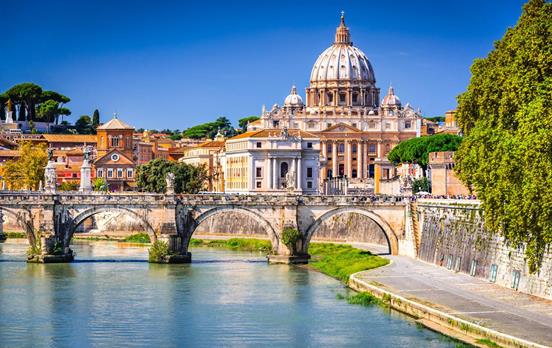
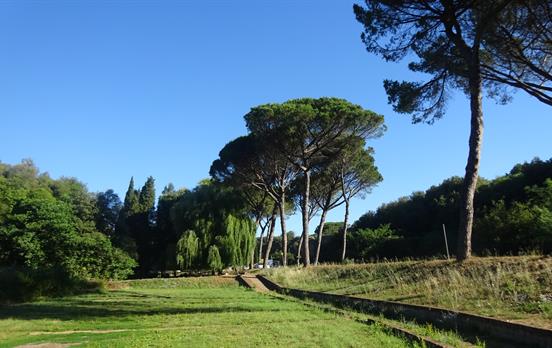
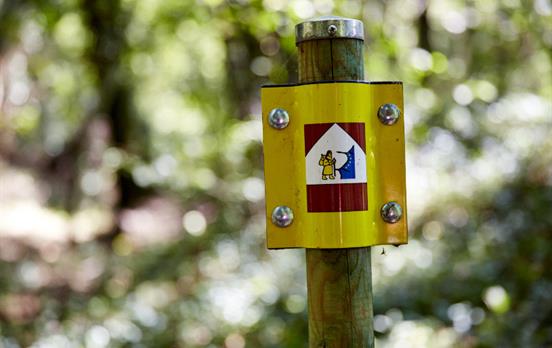


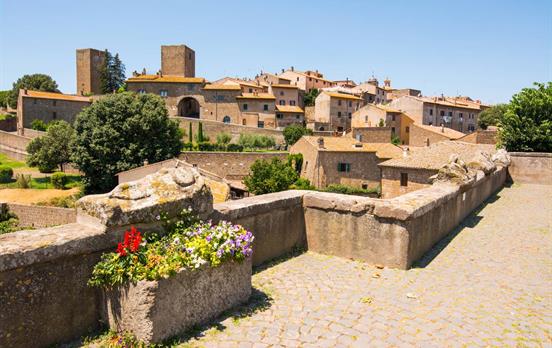
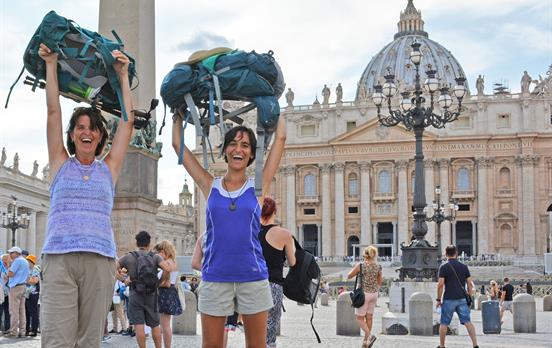
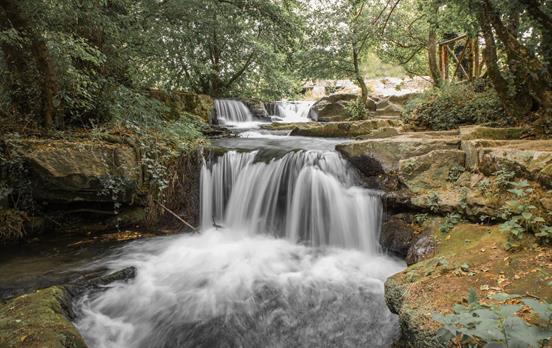
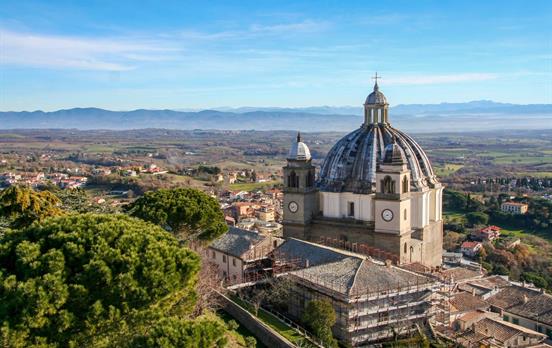
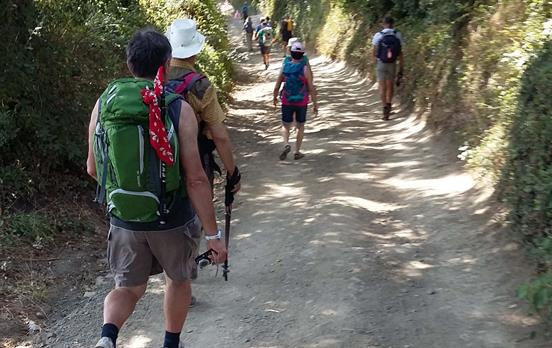


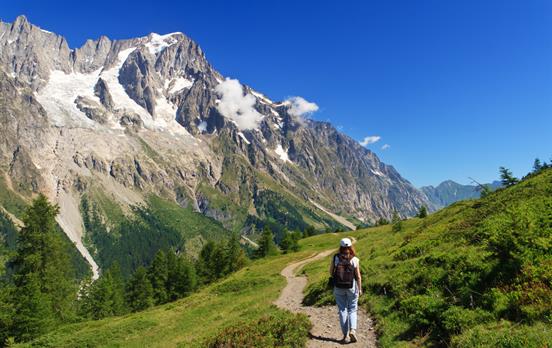
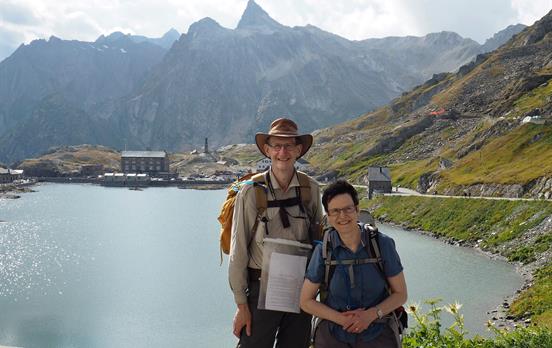
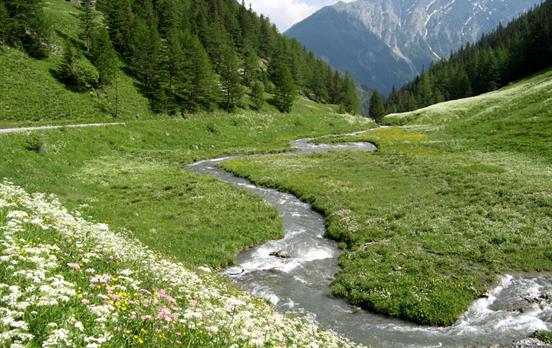
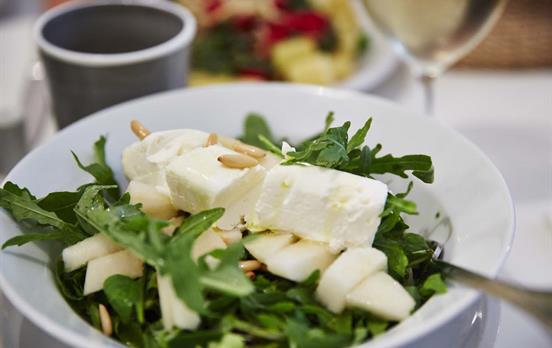

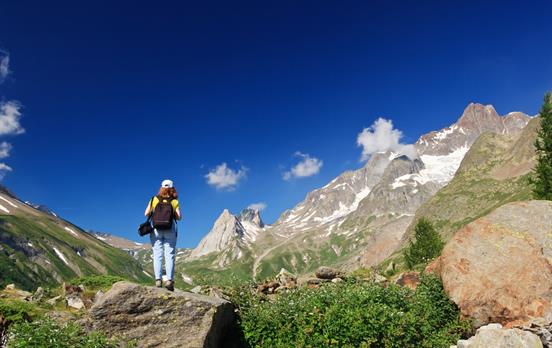
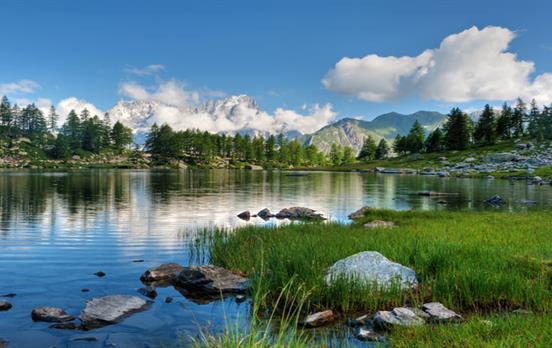
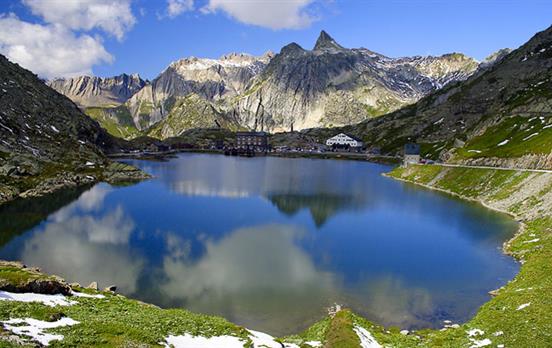
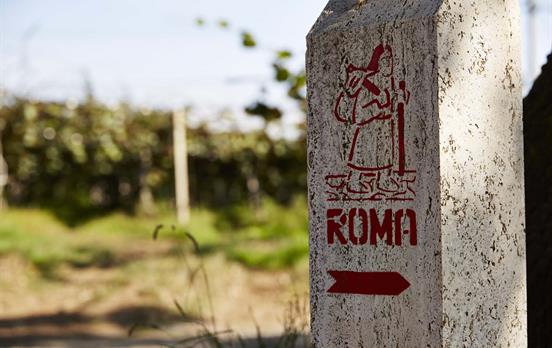


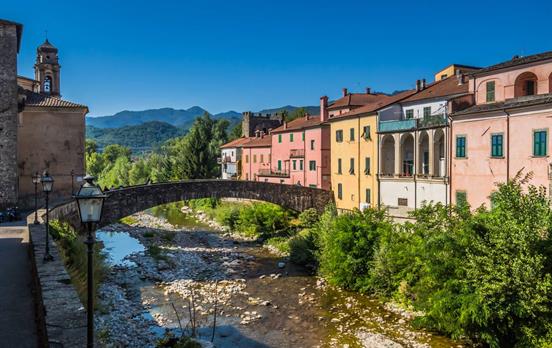
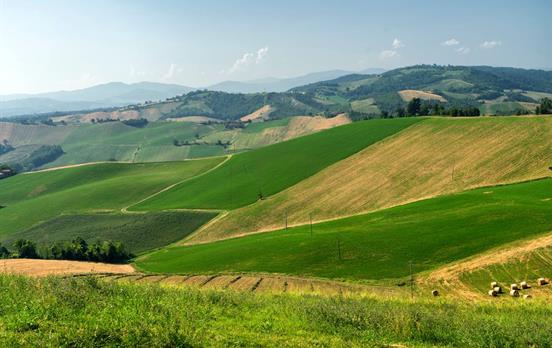

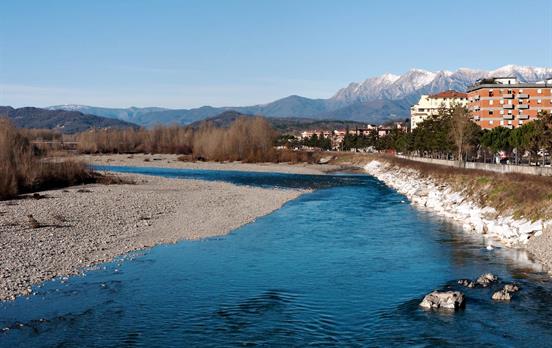
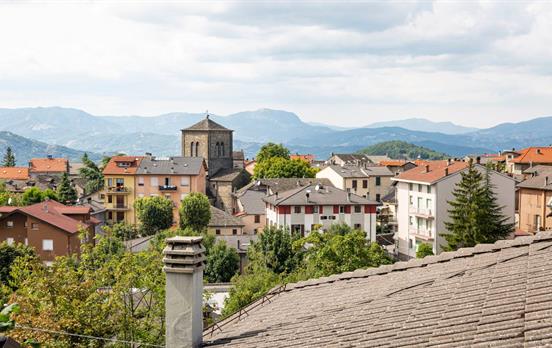
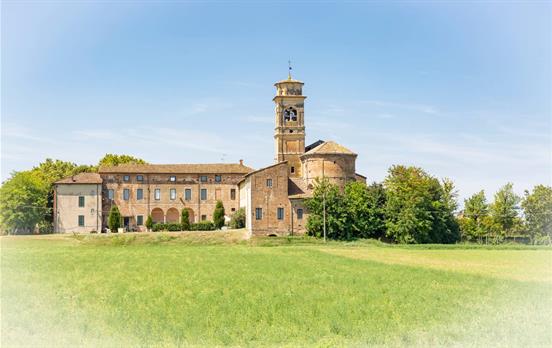
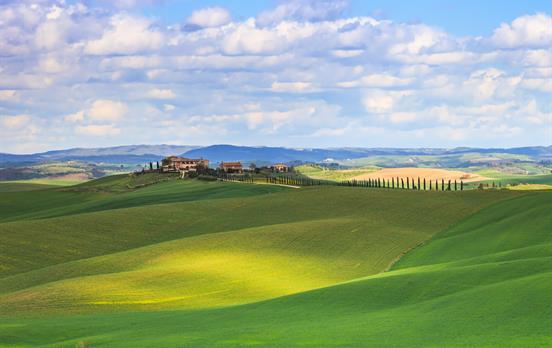
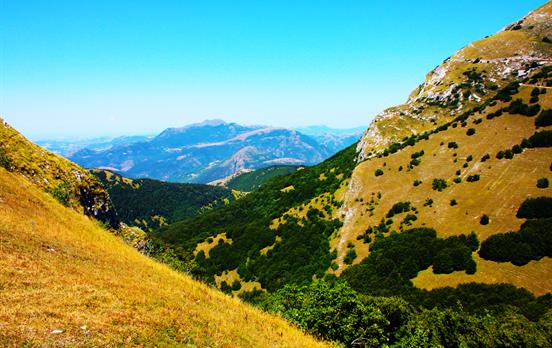

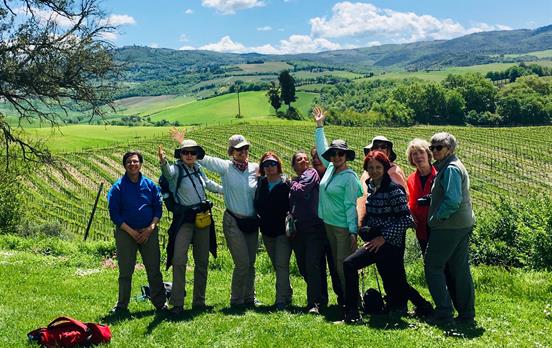
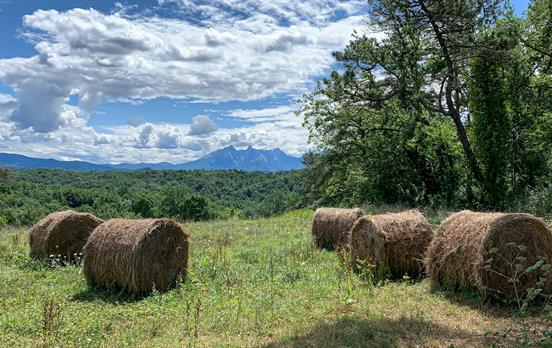
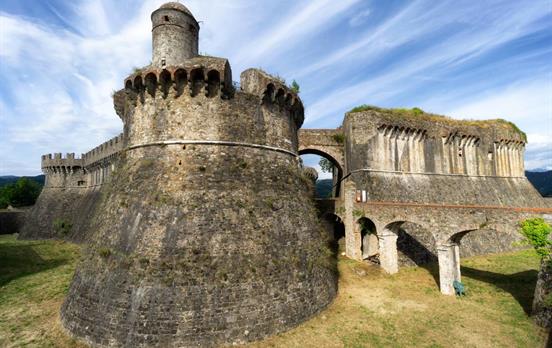

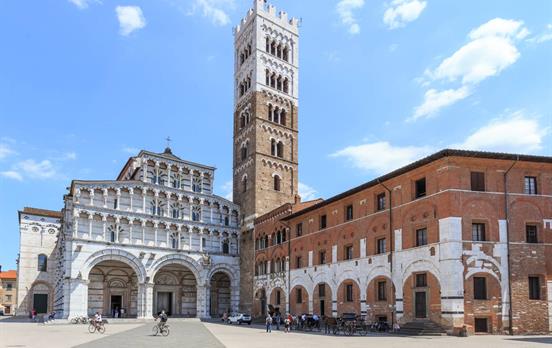
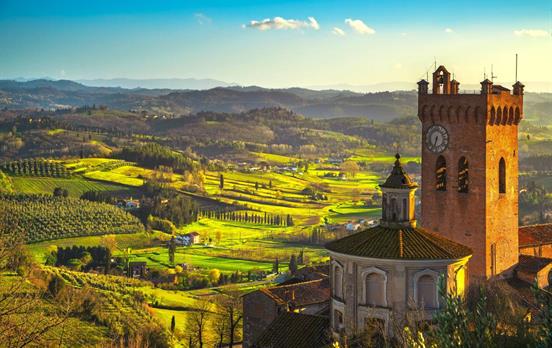
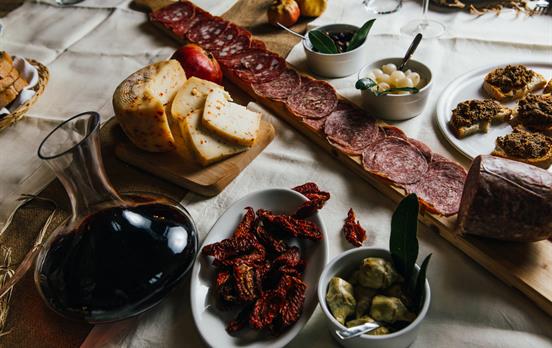
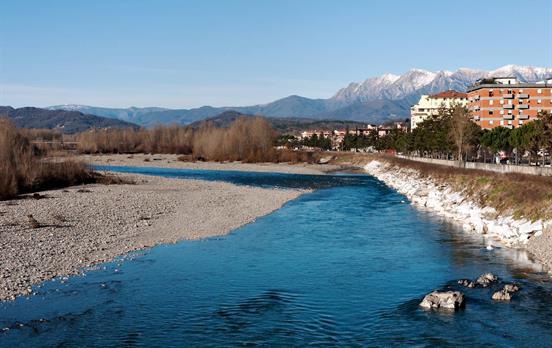
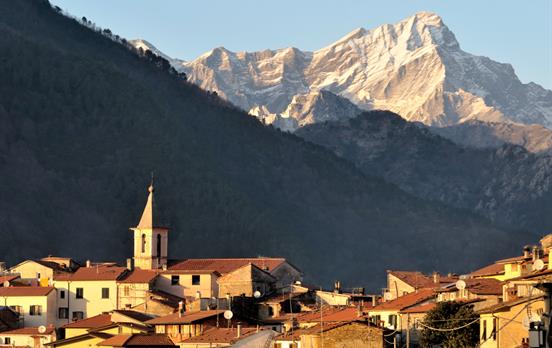
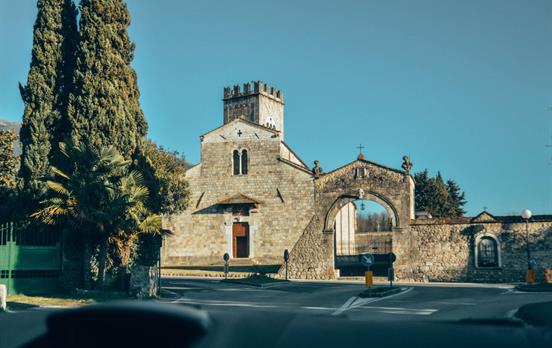



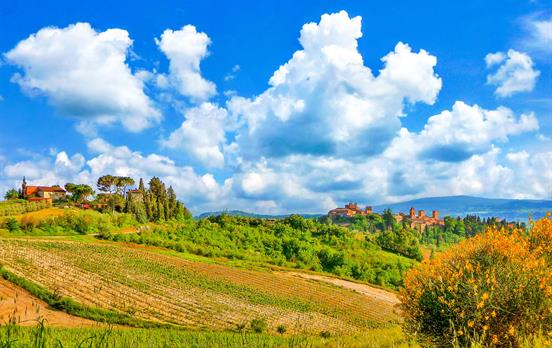
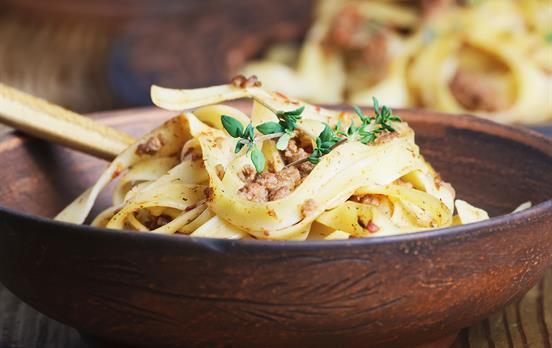
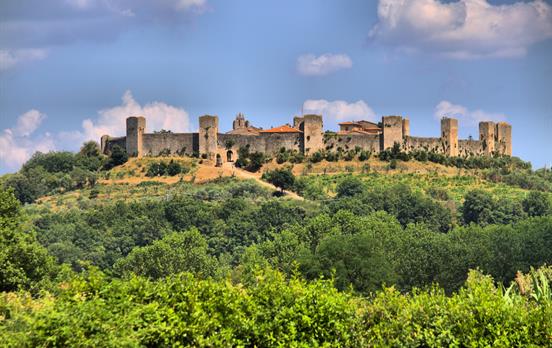
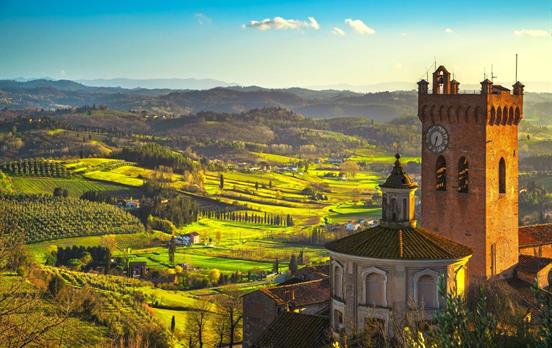
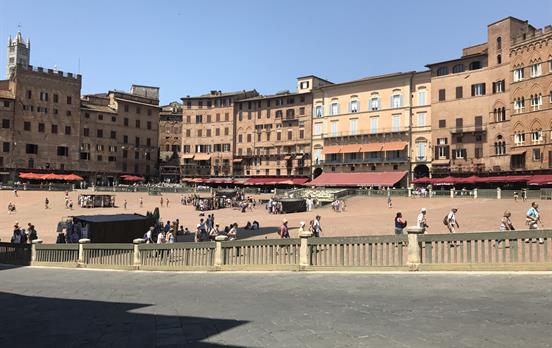
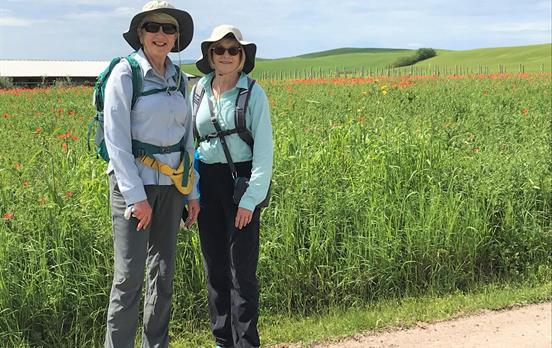
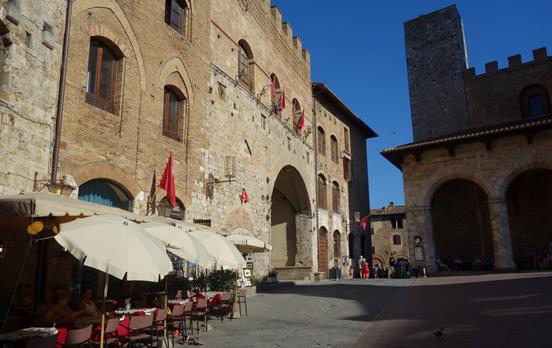
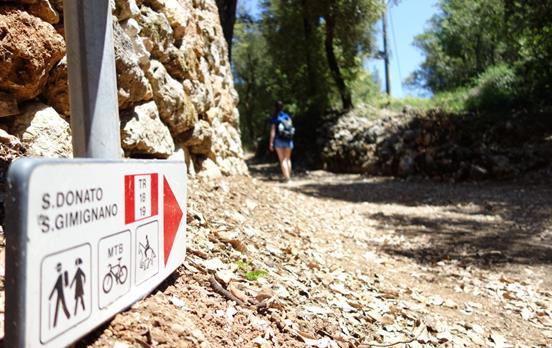

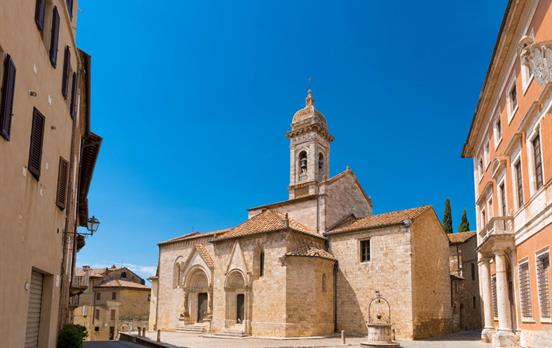
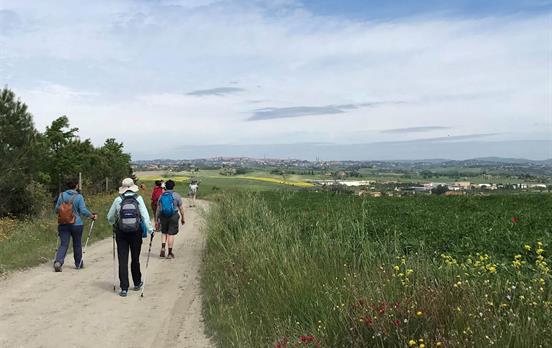
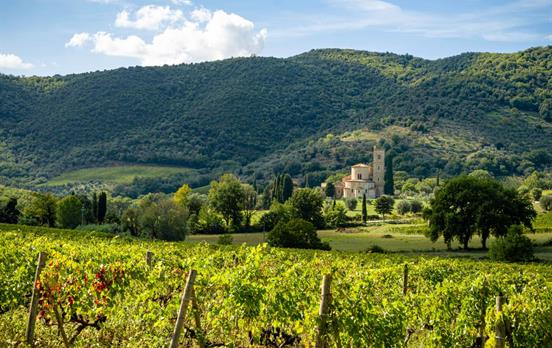
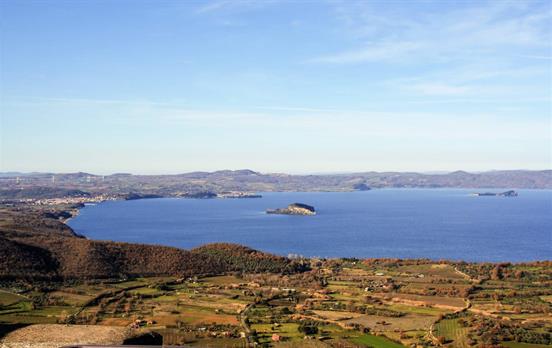
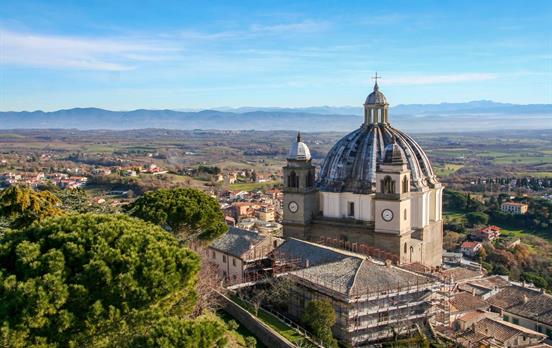
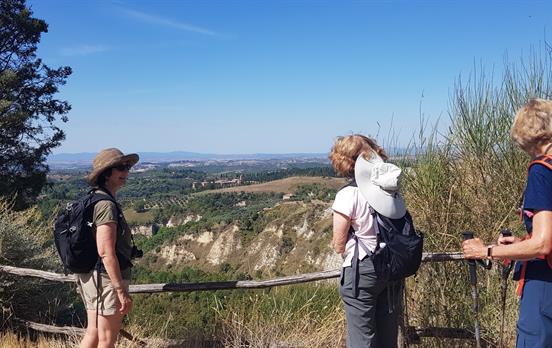
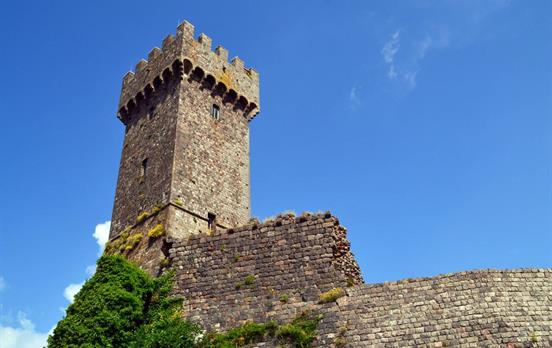
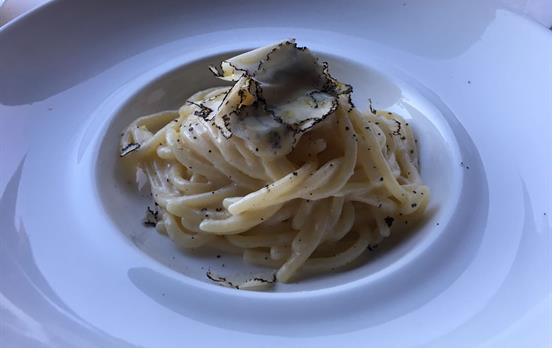
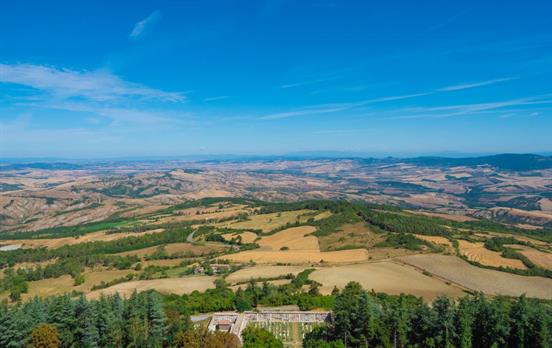

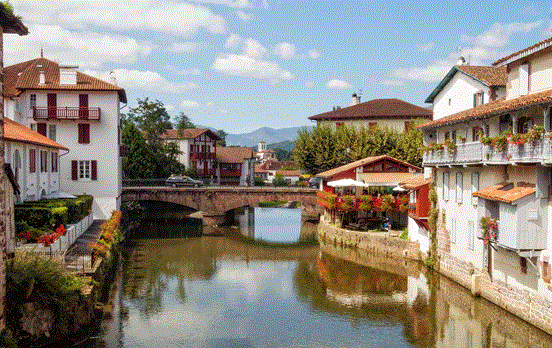

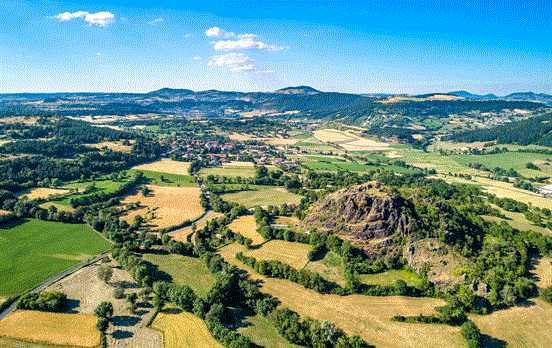

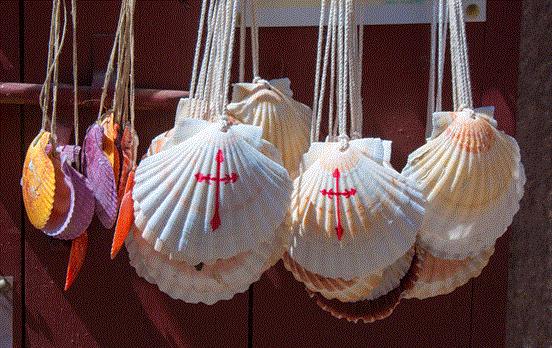
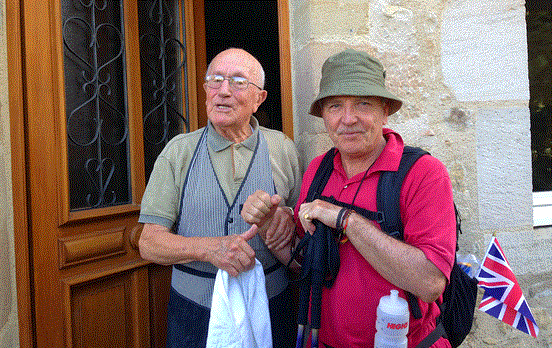

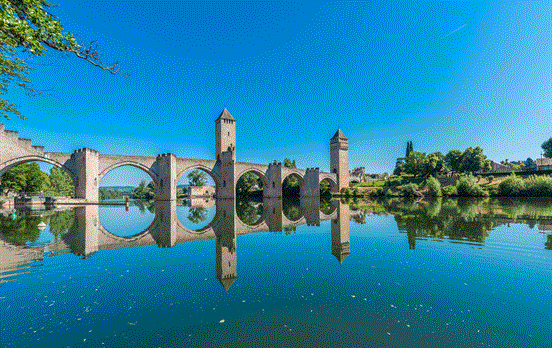
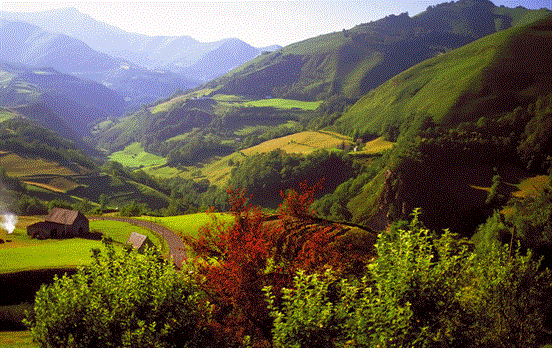
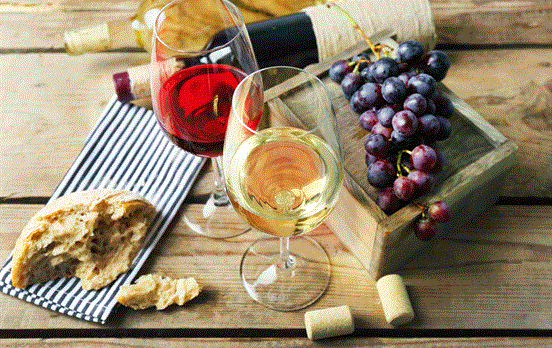
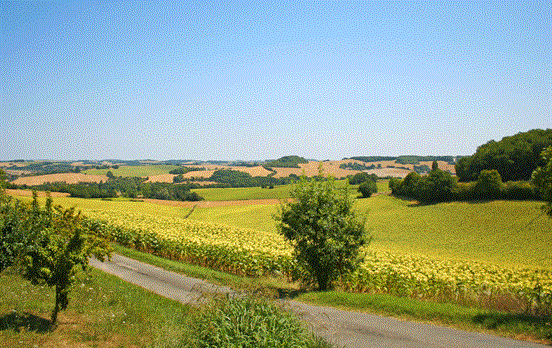
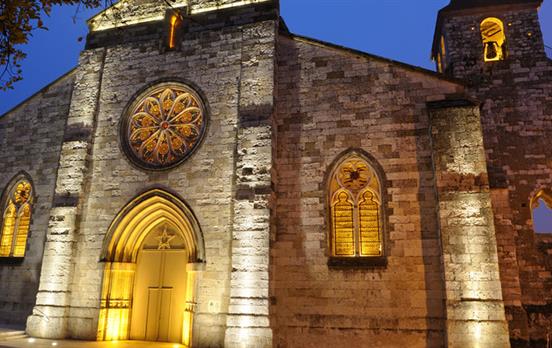
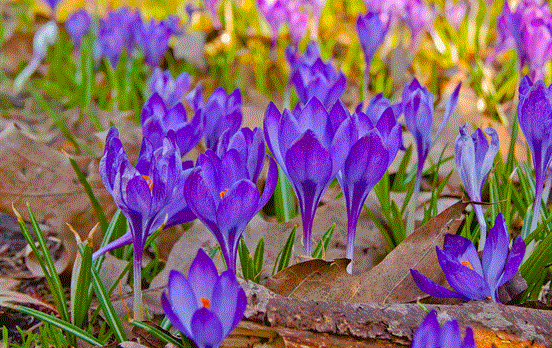

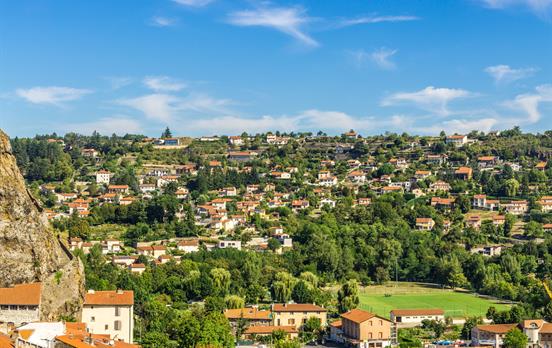
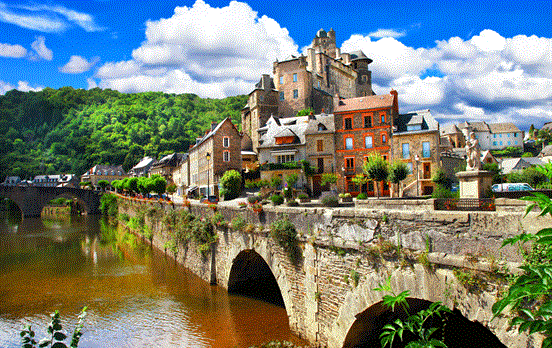

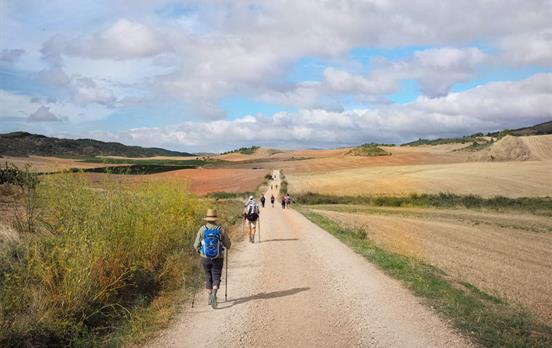
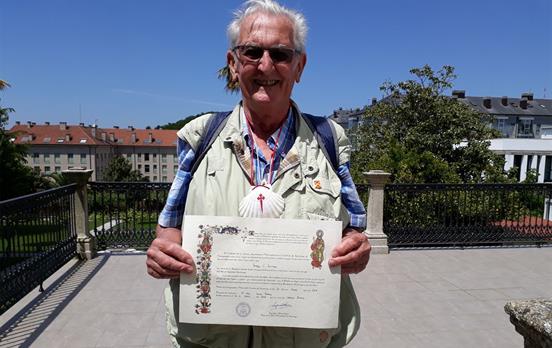

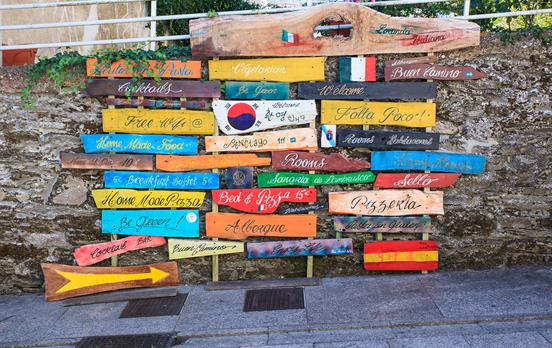

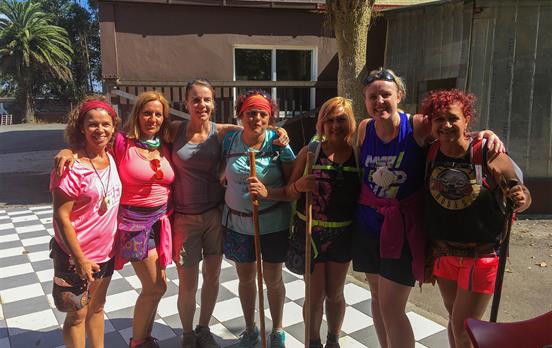
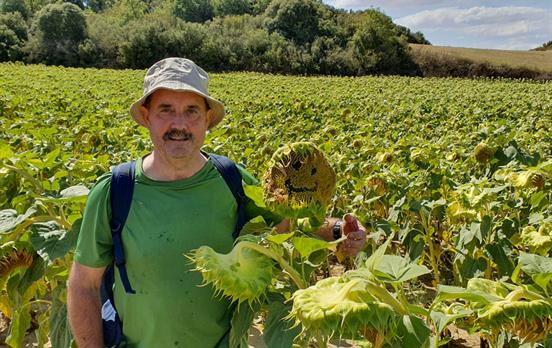
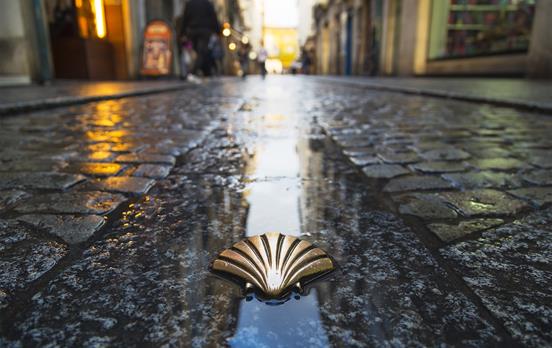




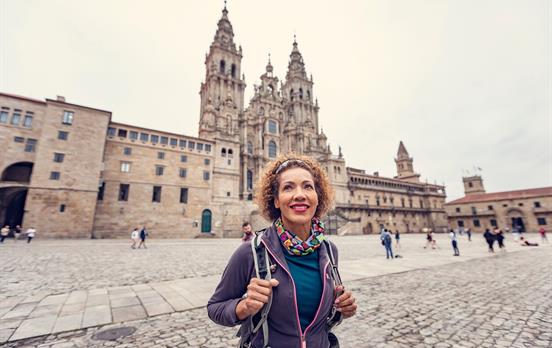

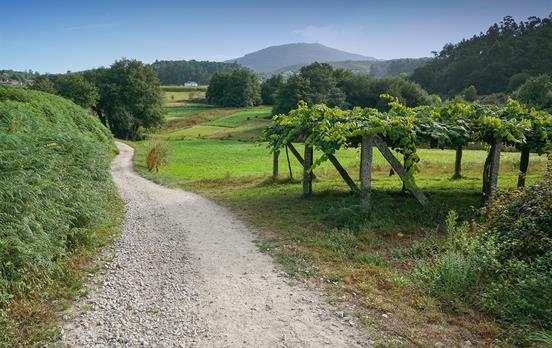

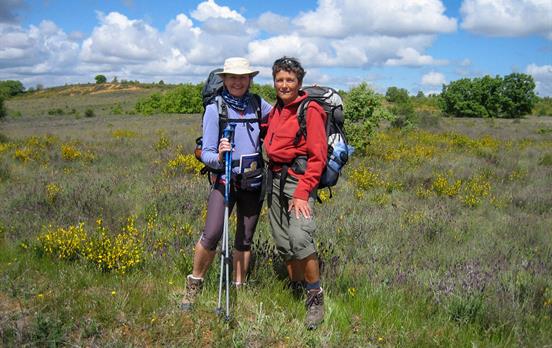
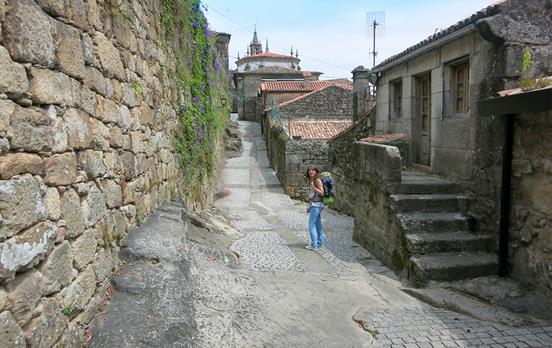
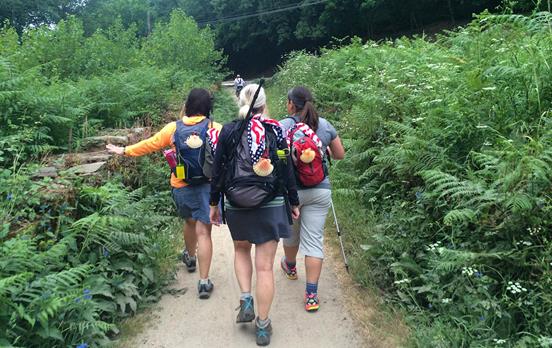
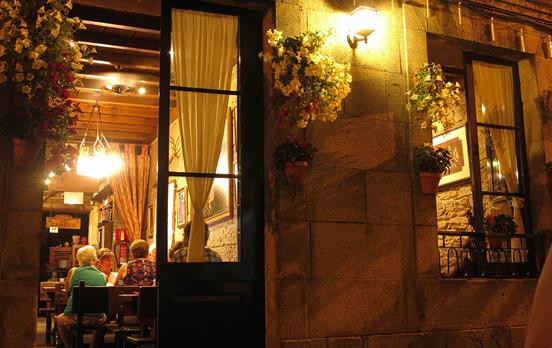
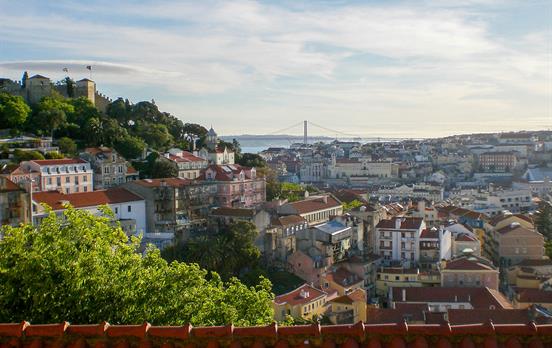

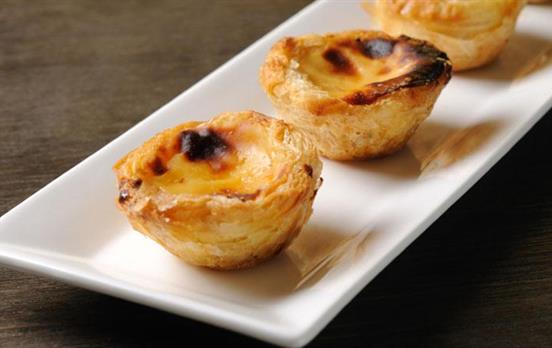



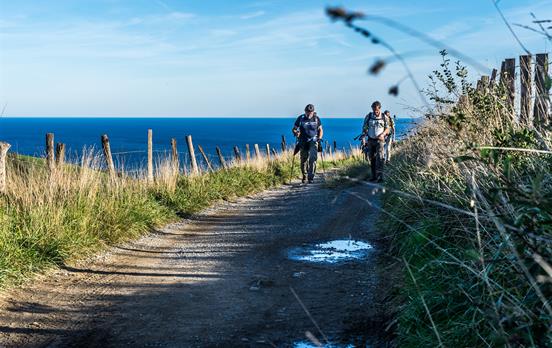
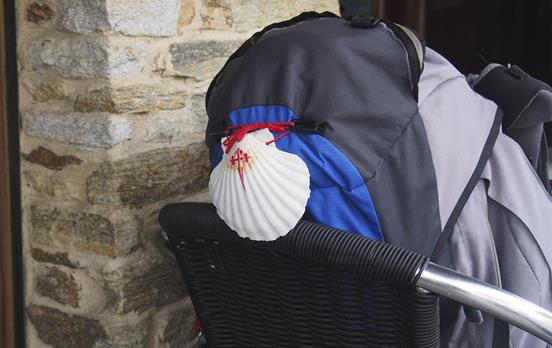


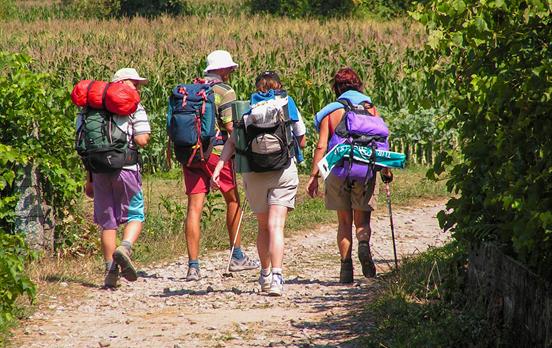
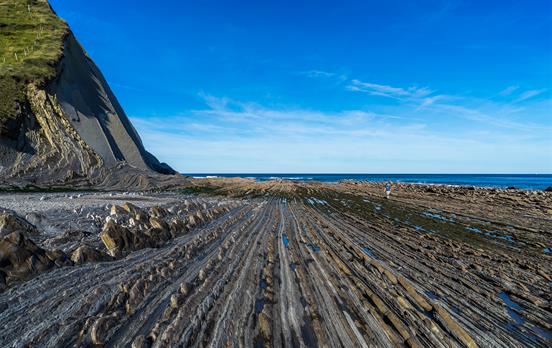
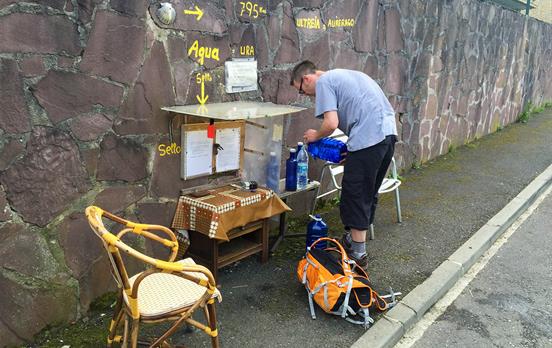

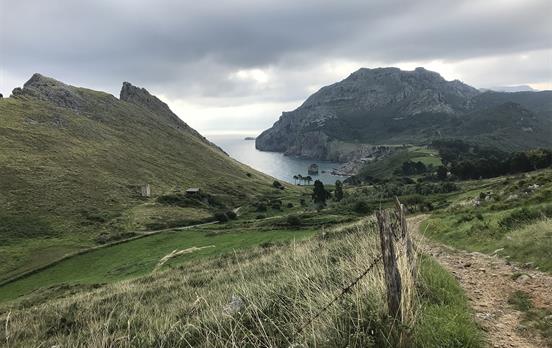
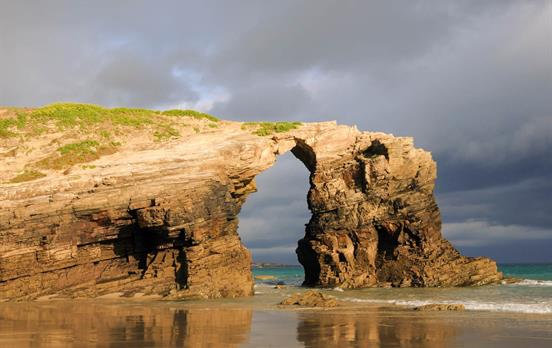

 Australia
Australia New Zealand
New Zealand South Africa
South Africa European Union
European Union